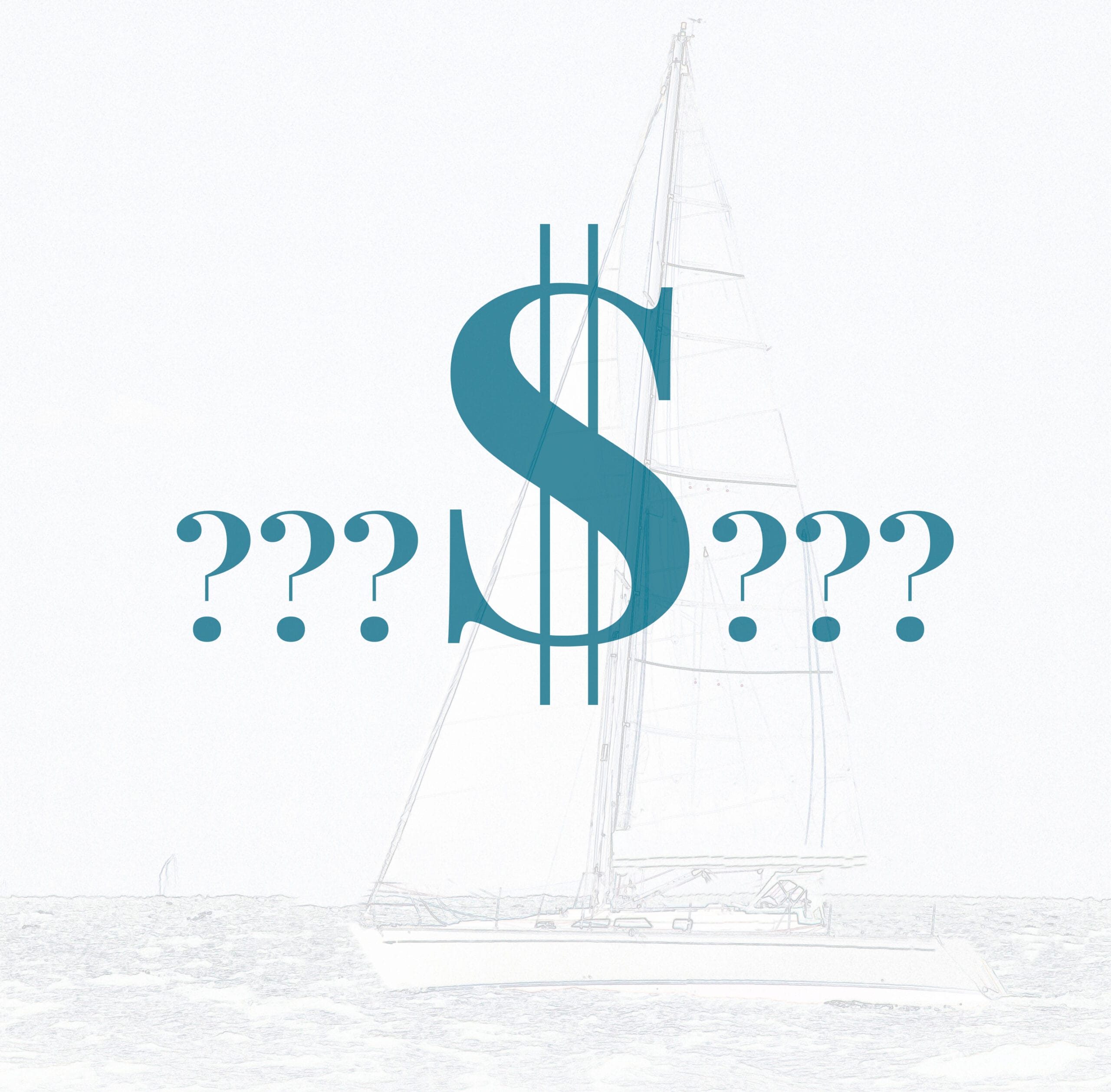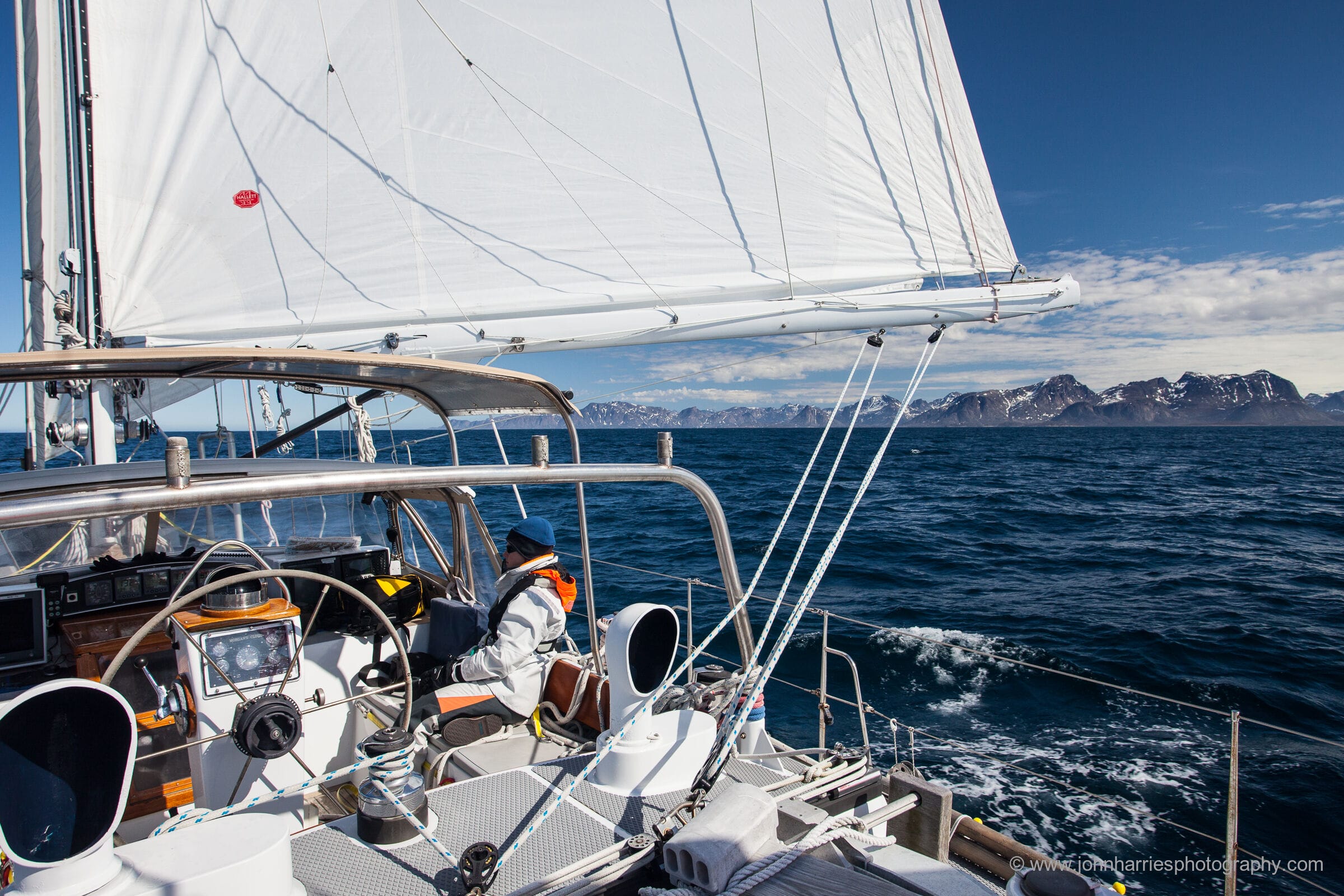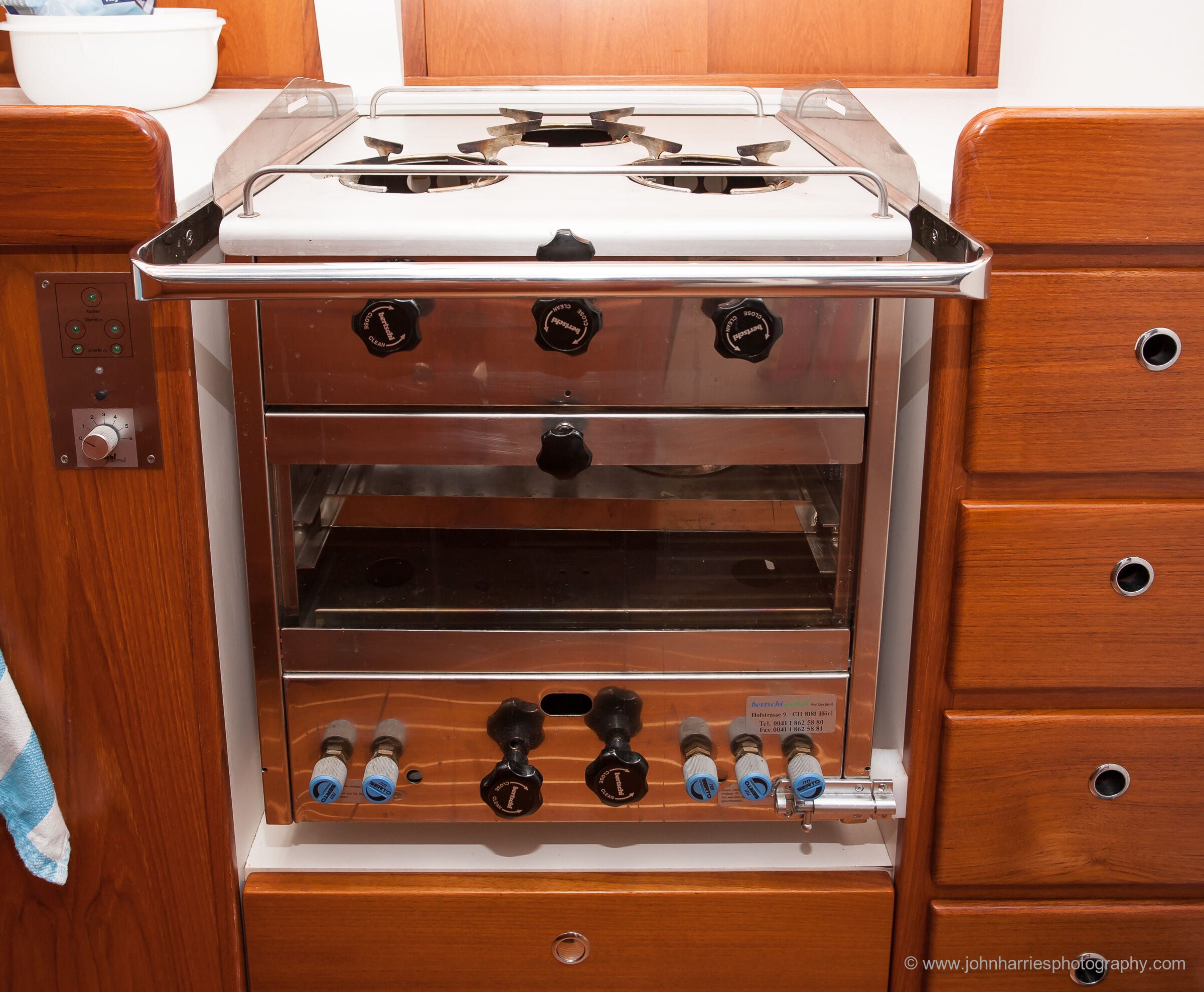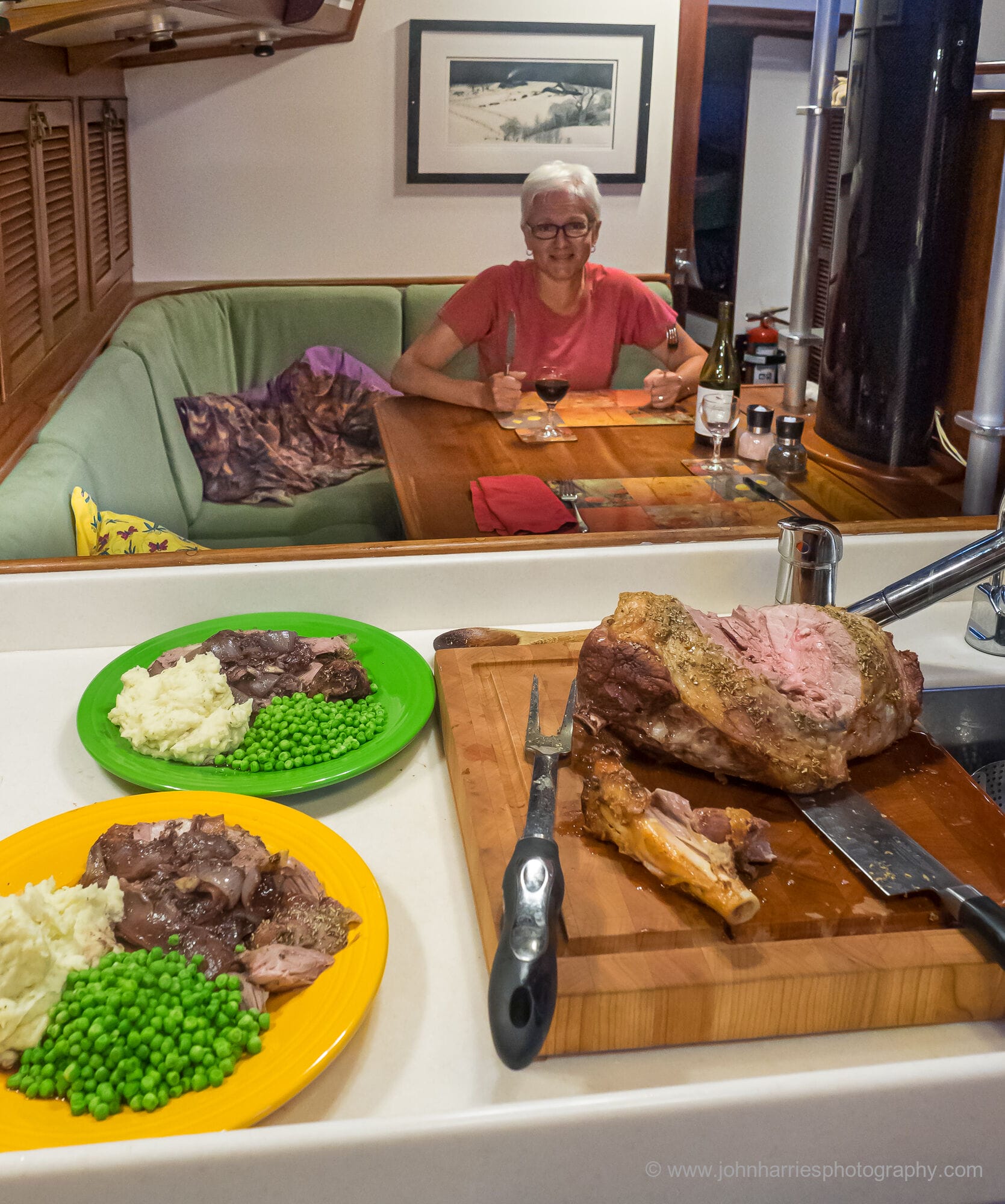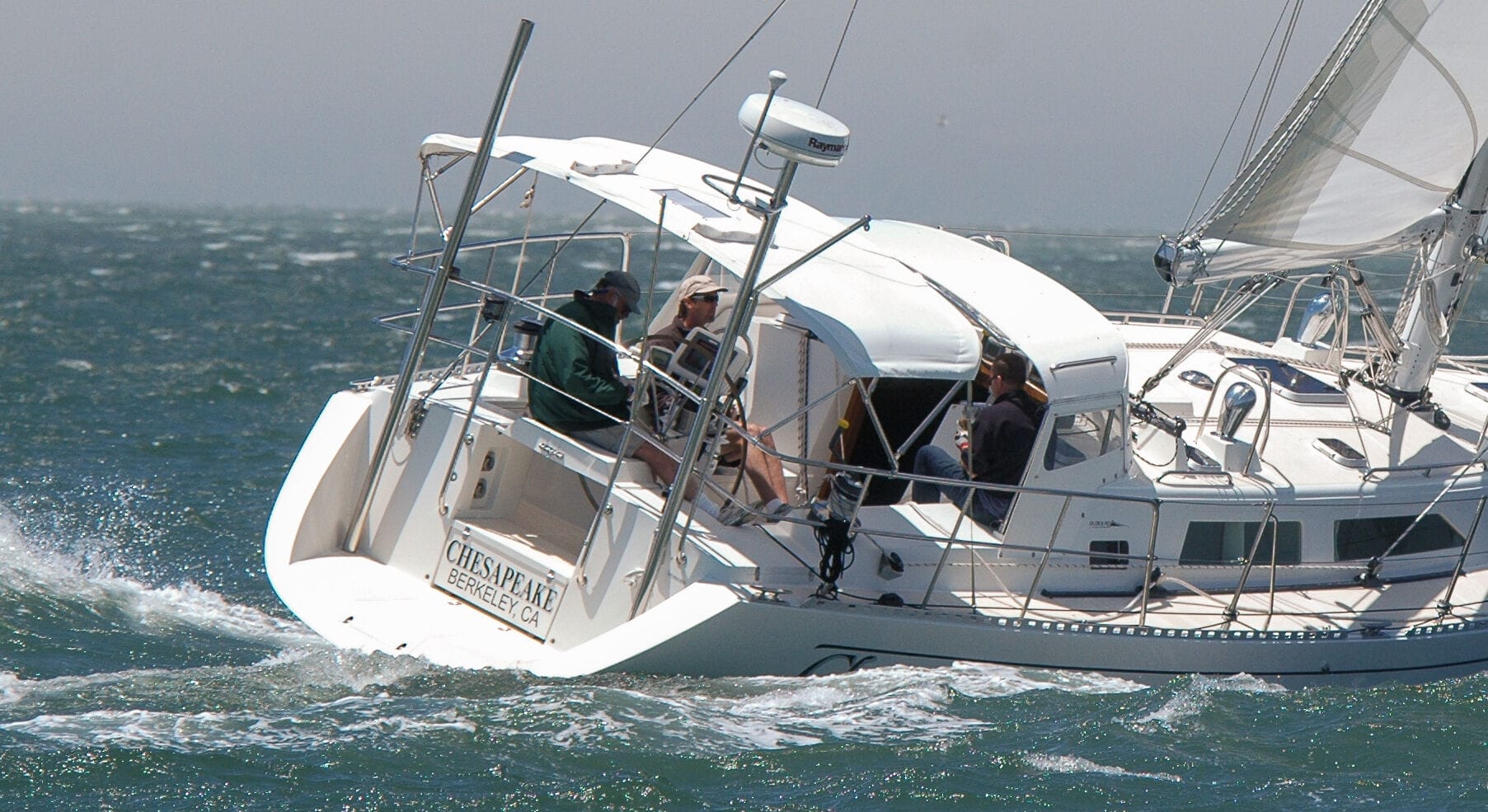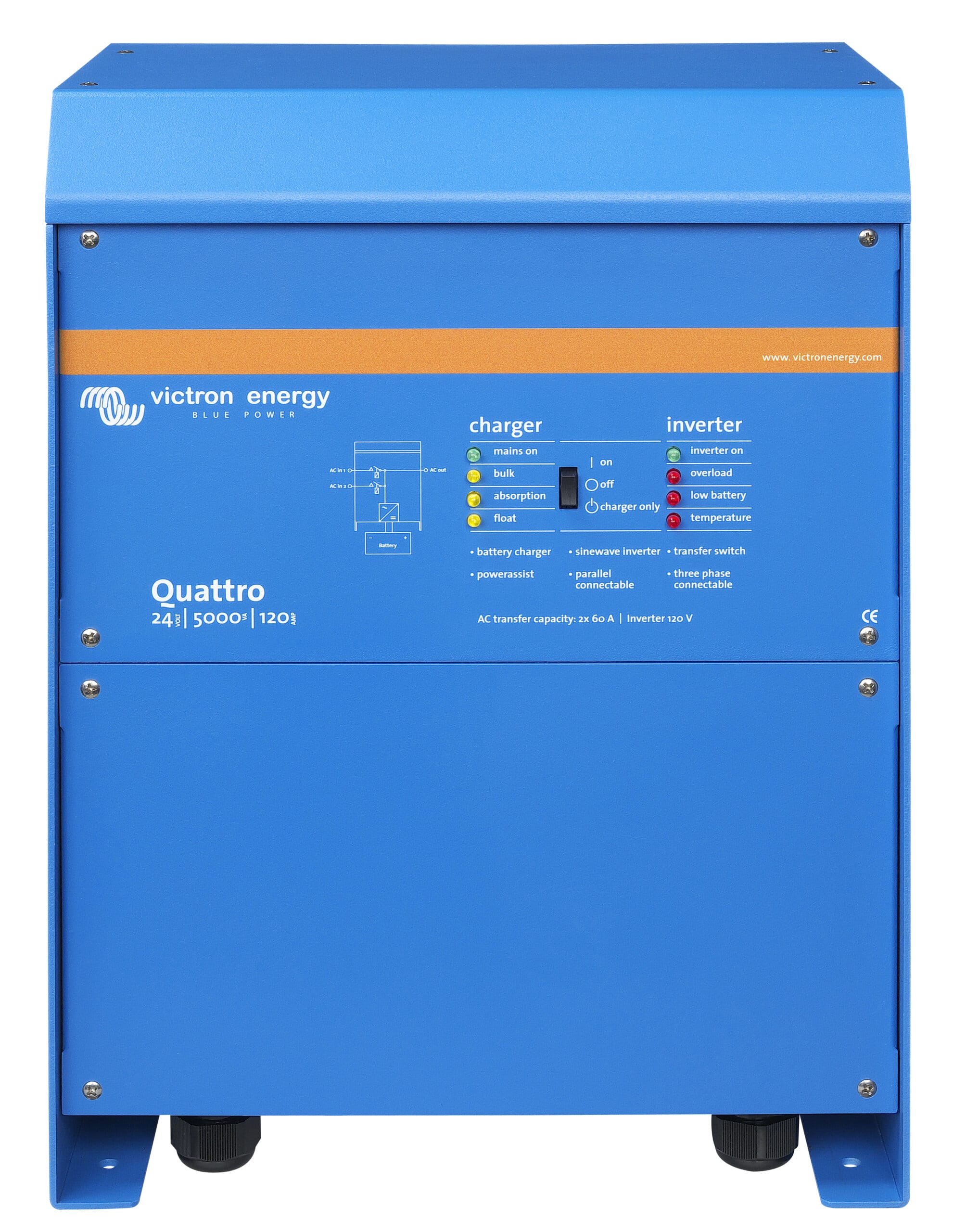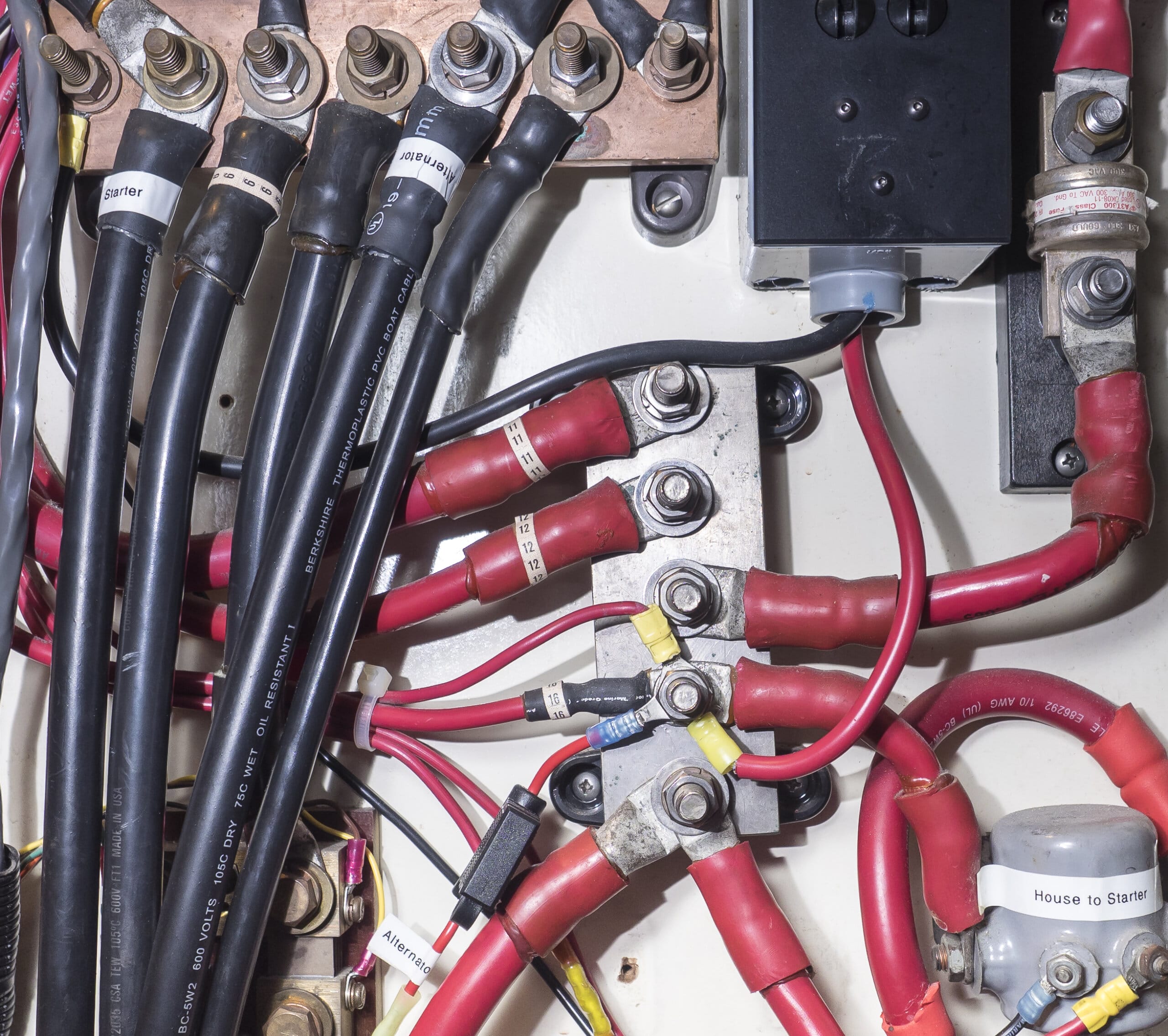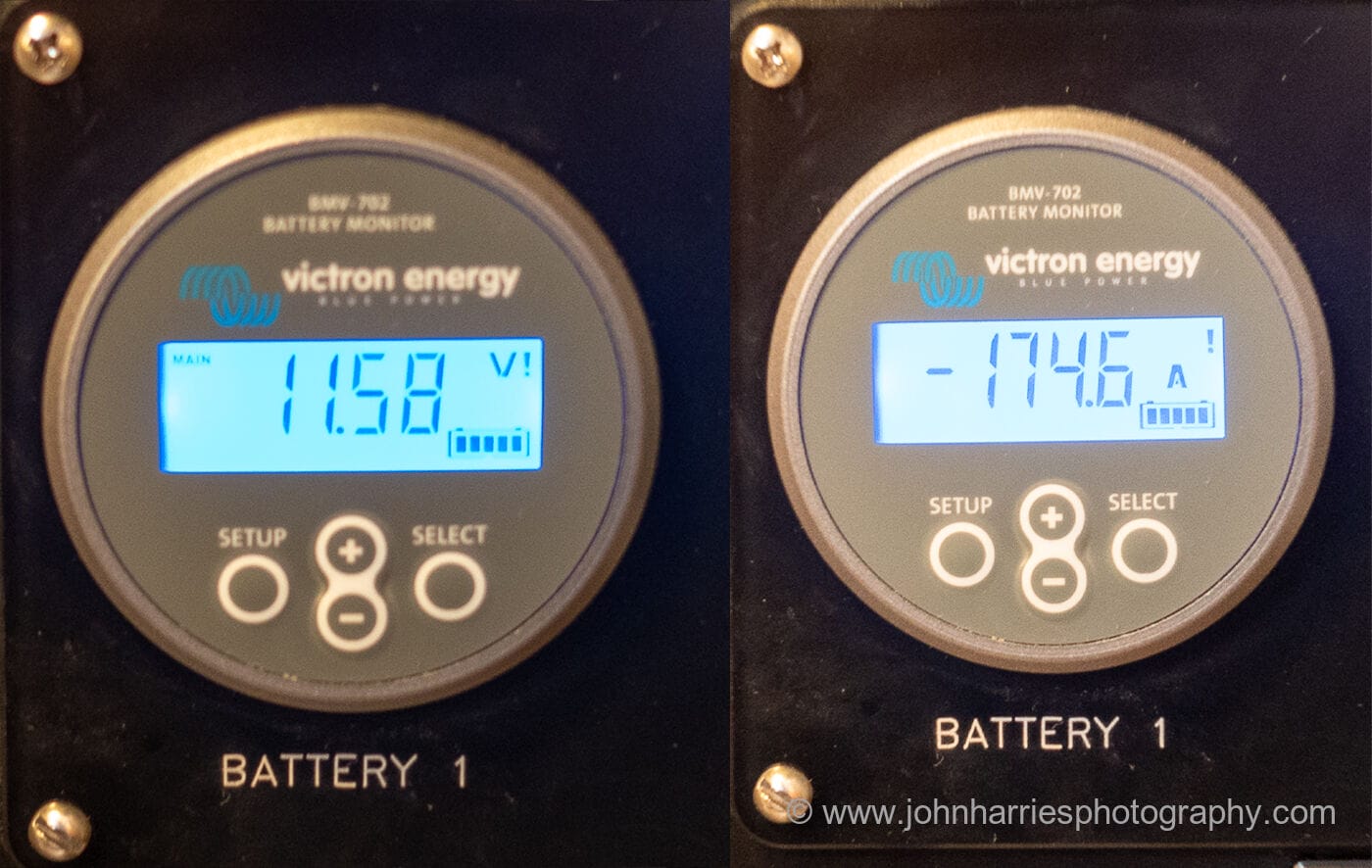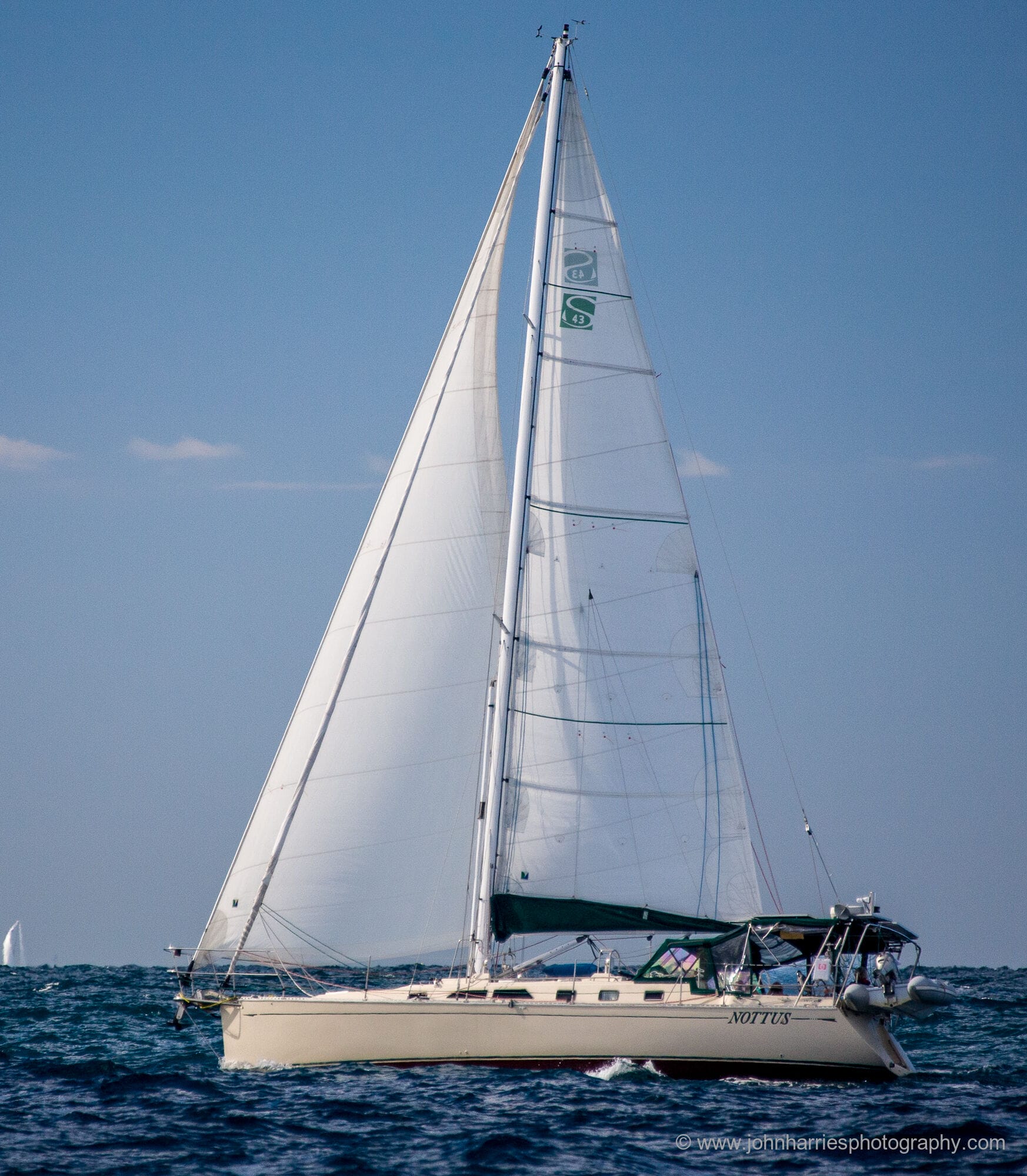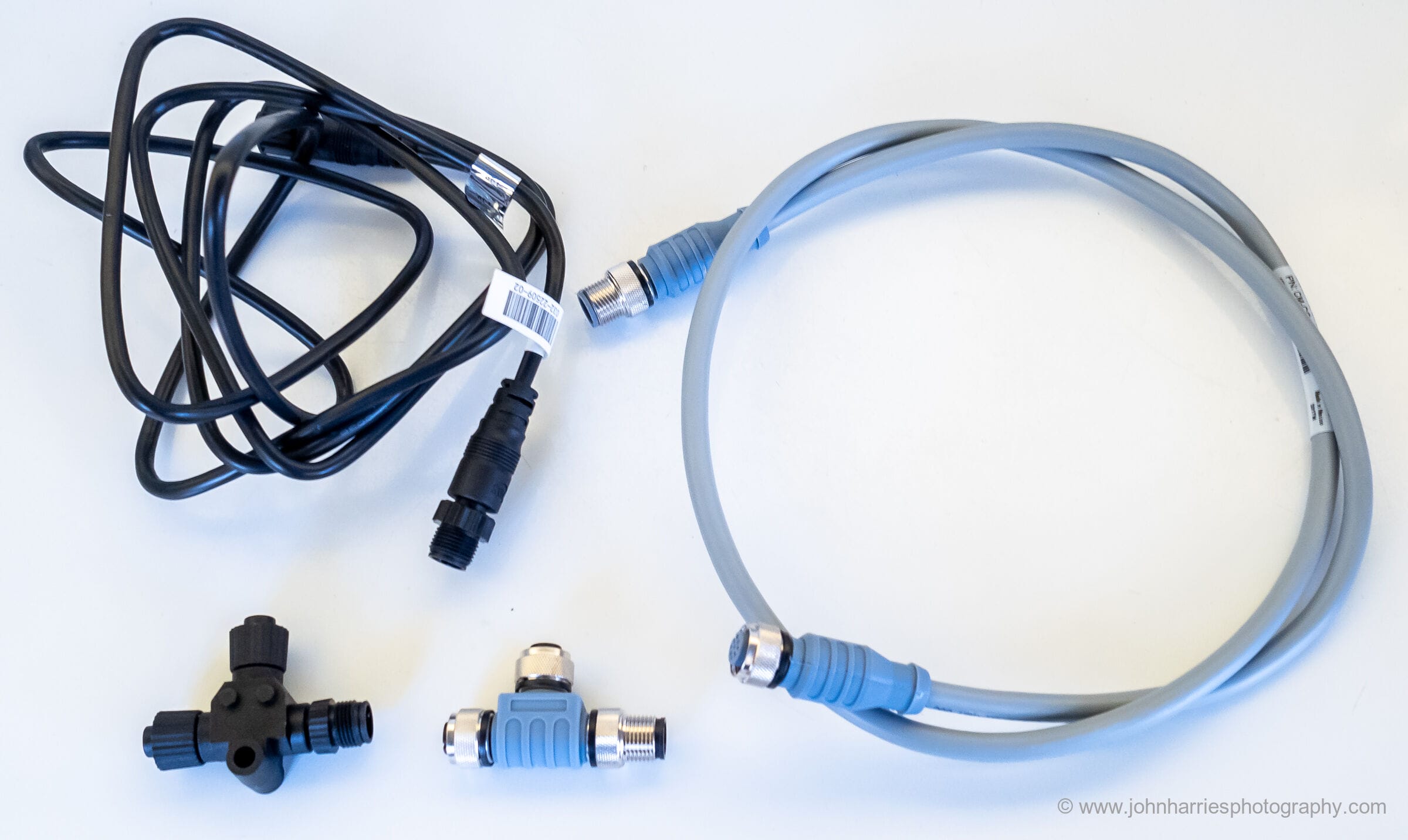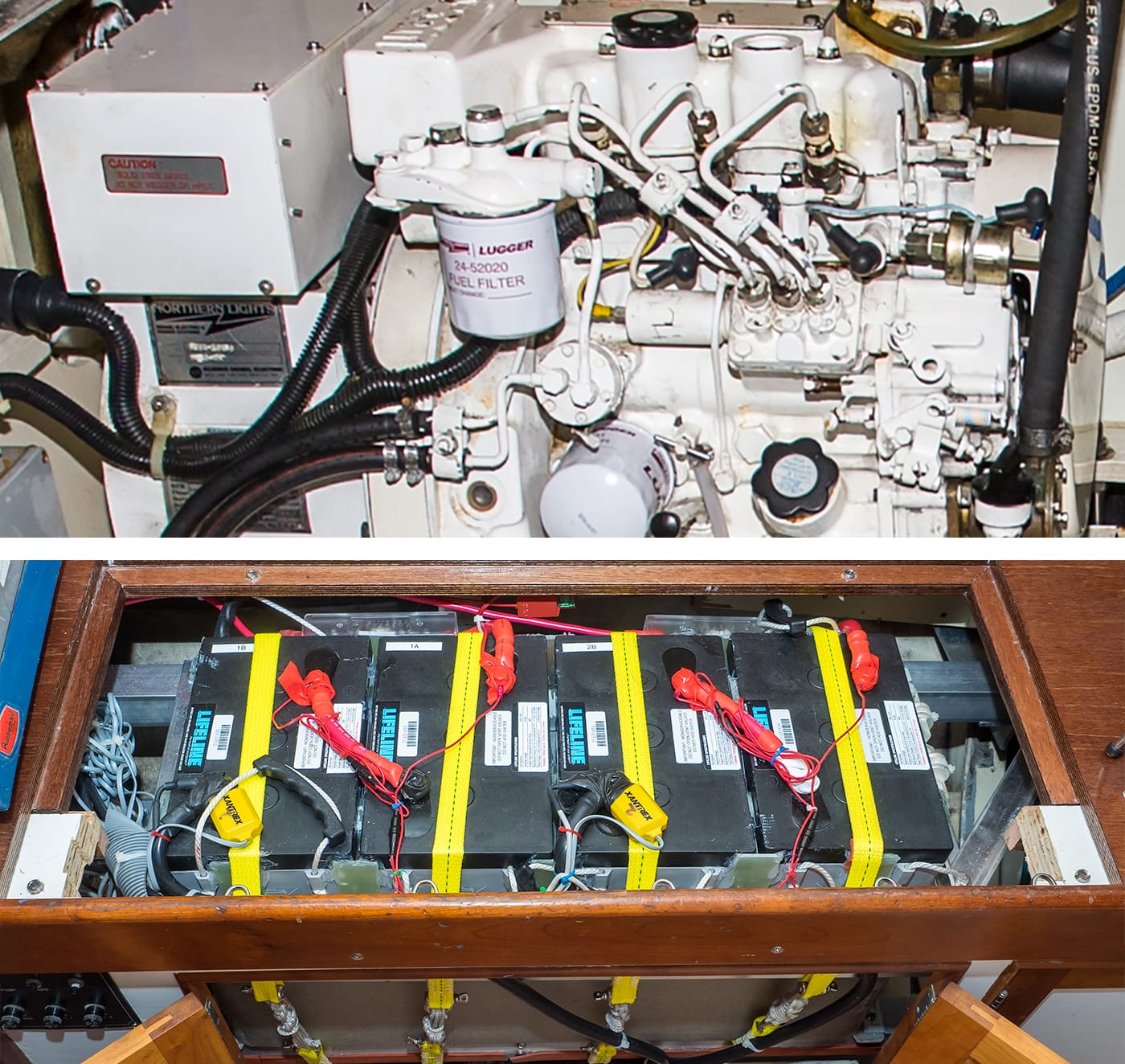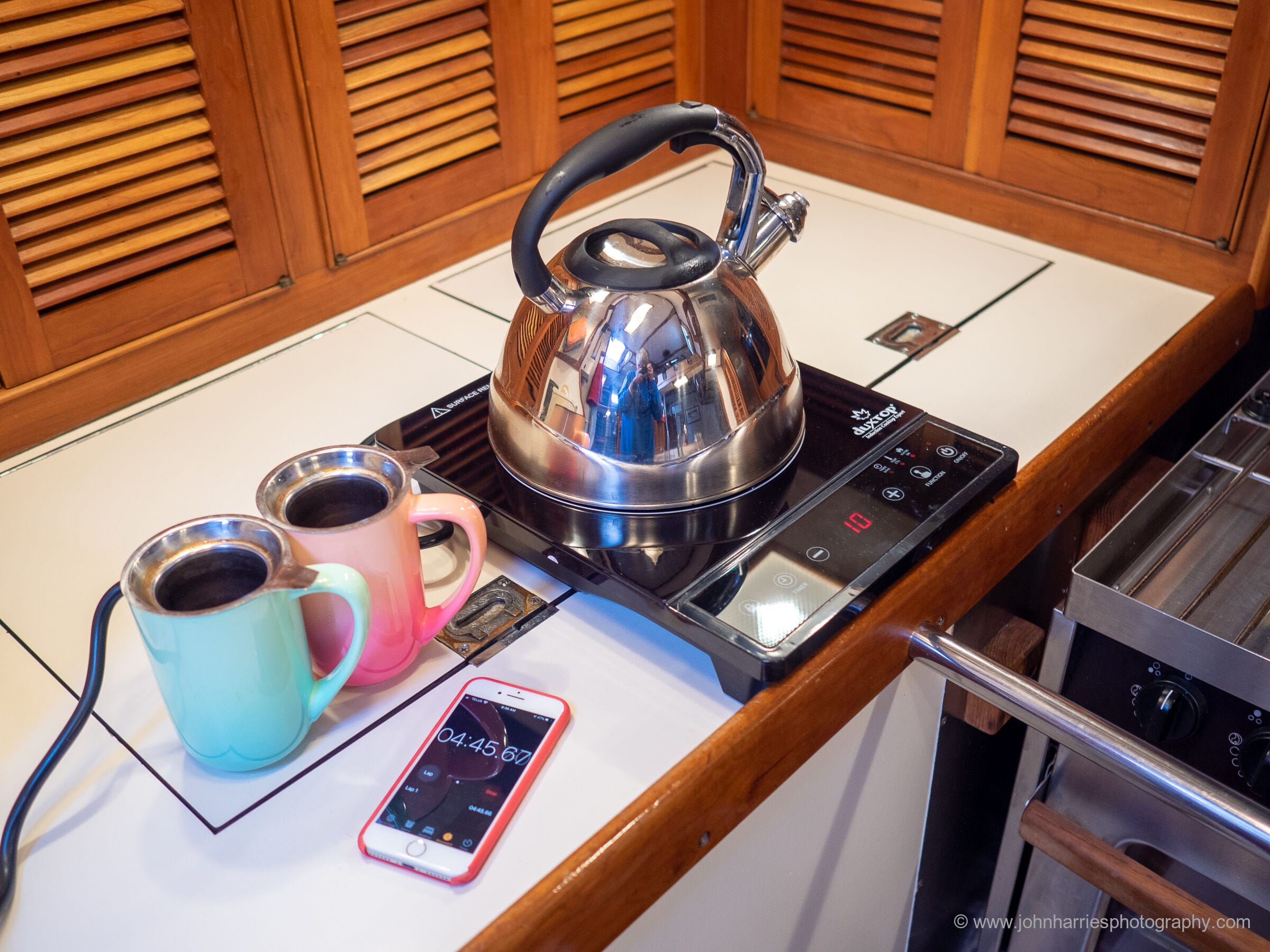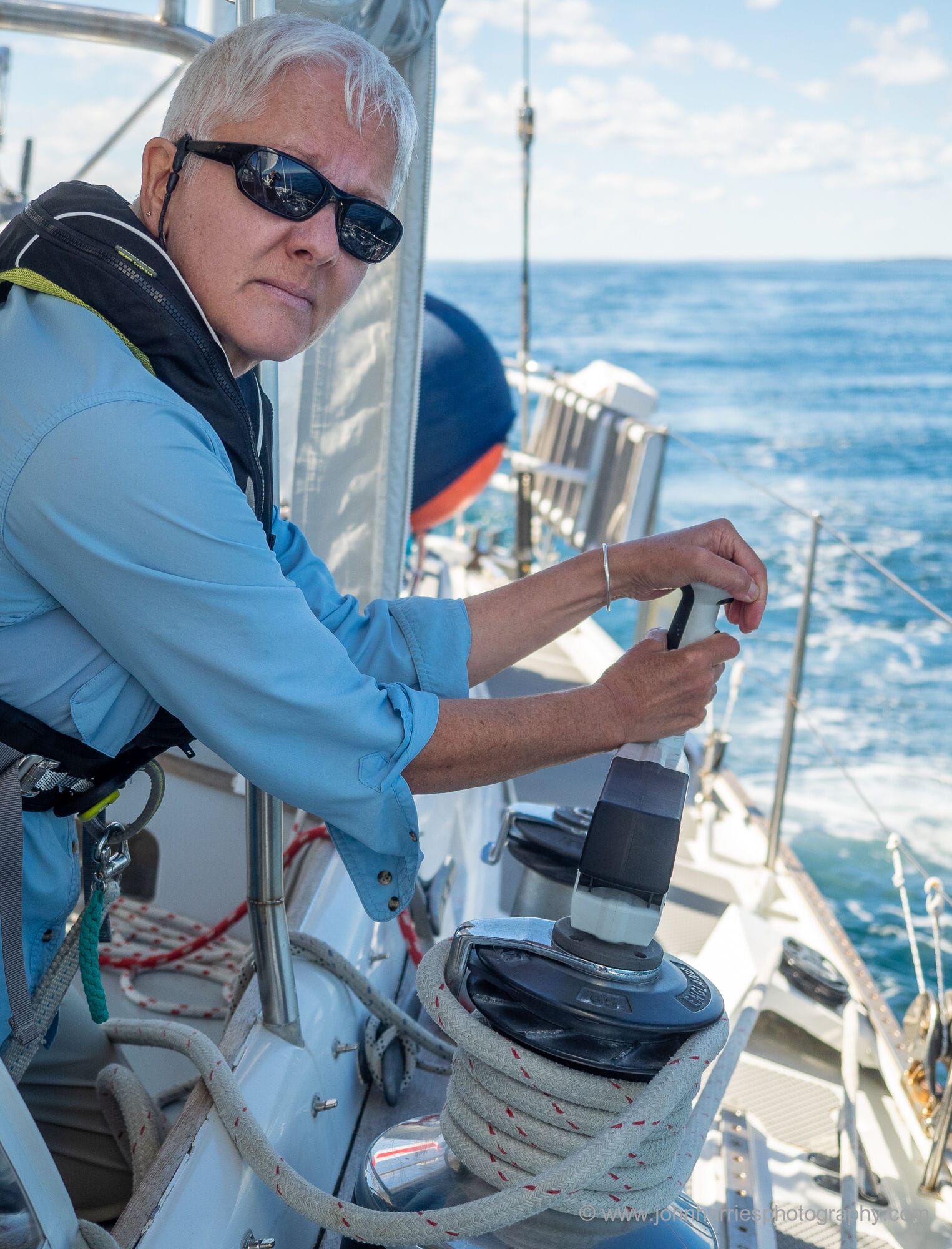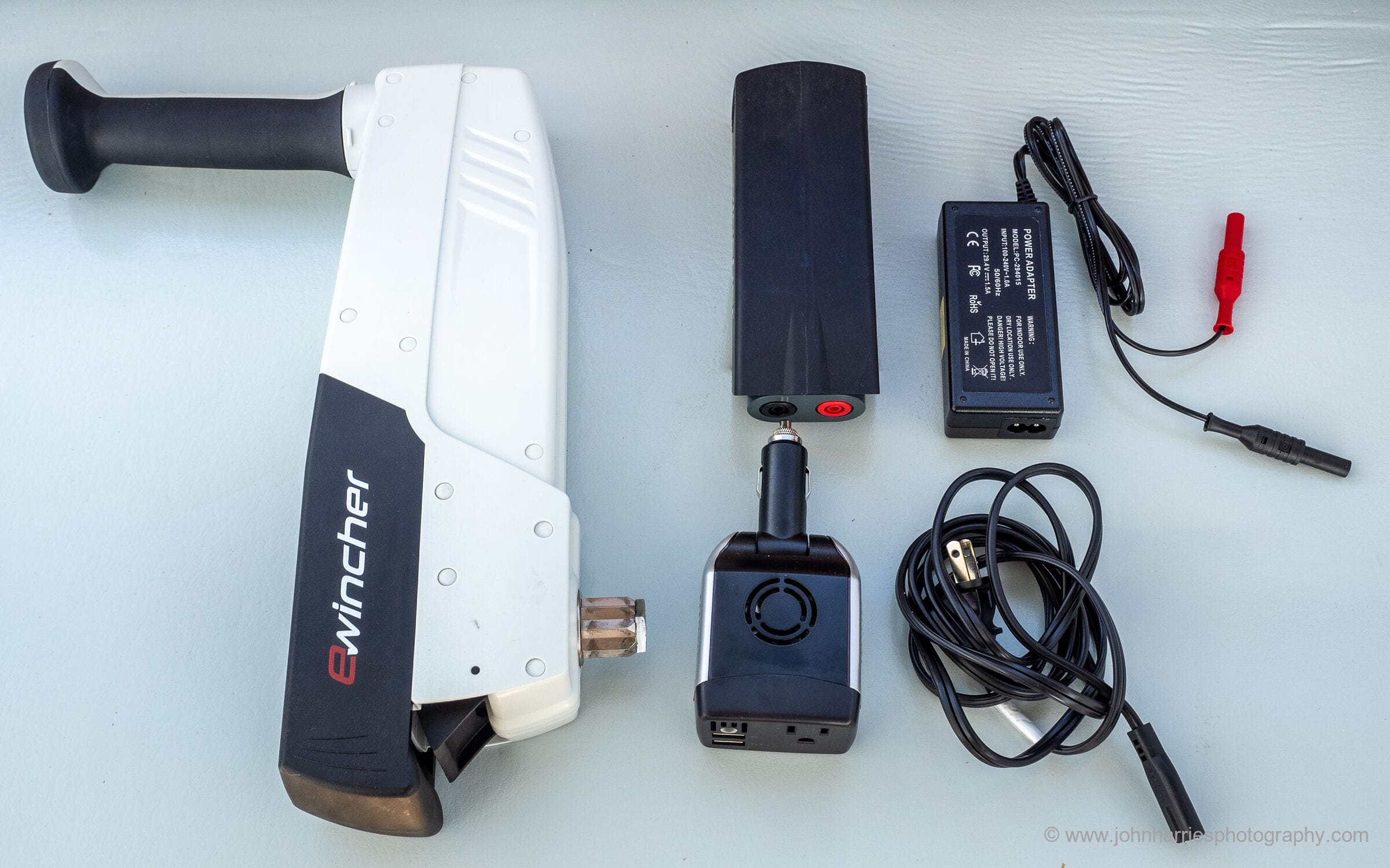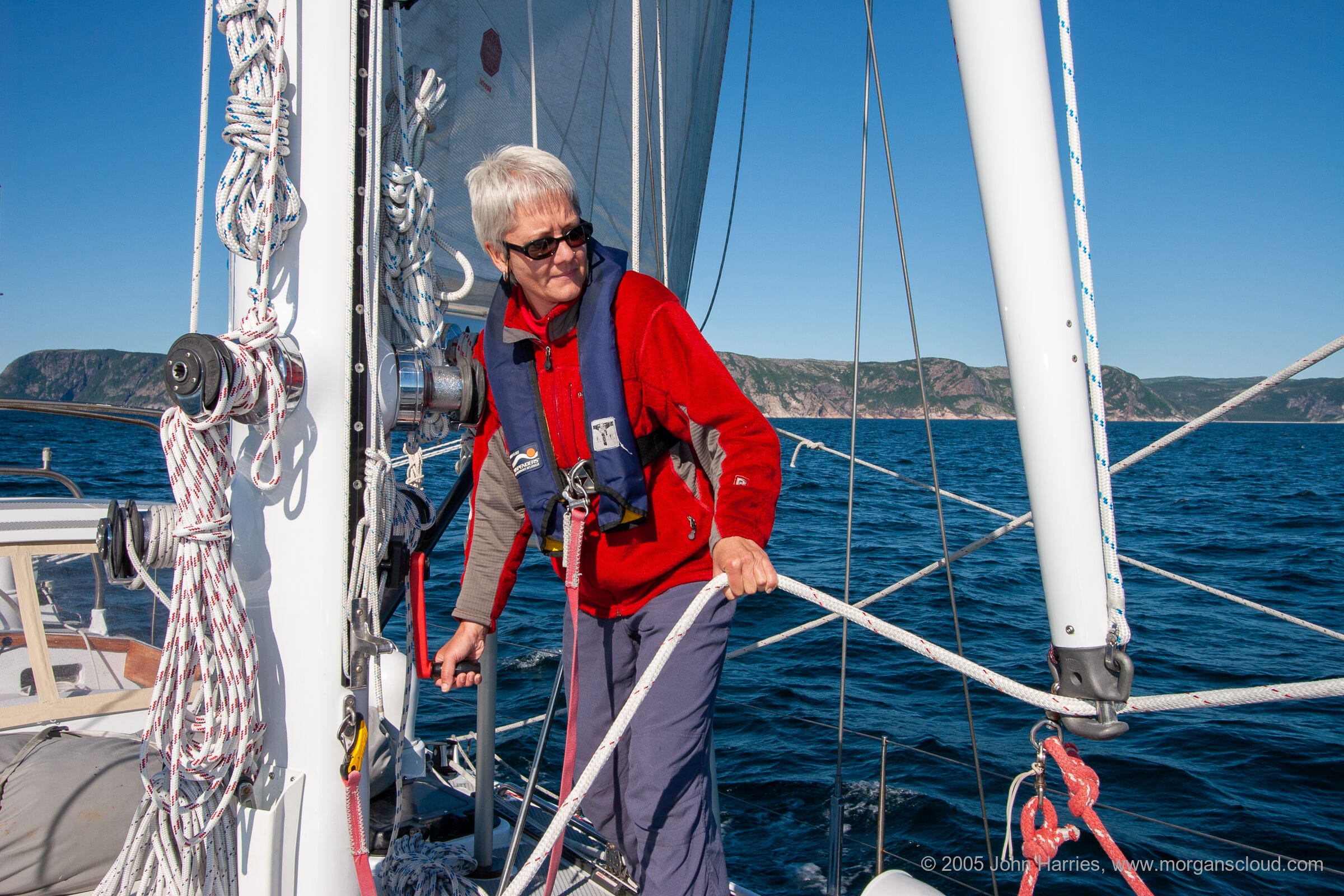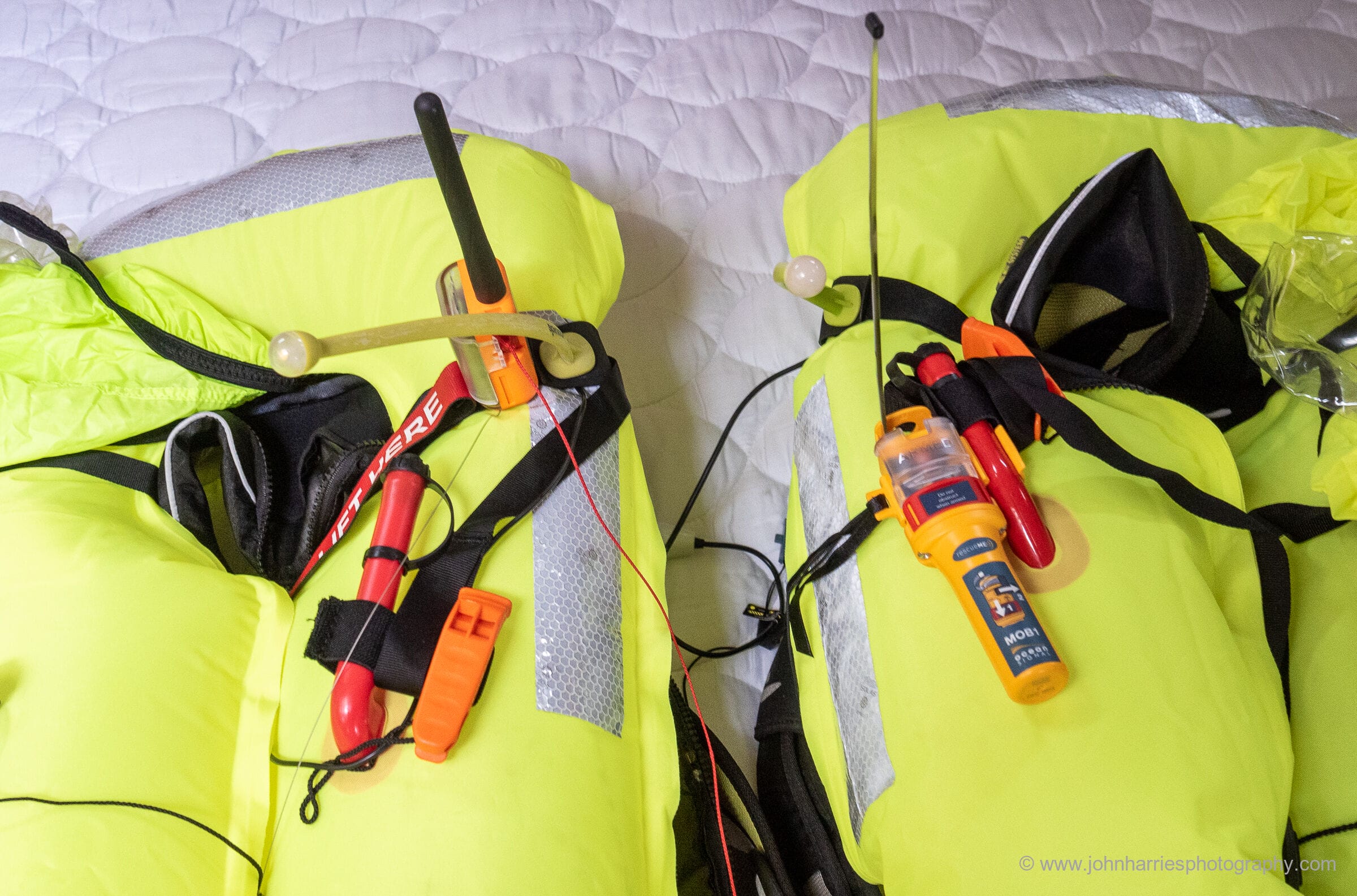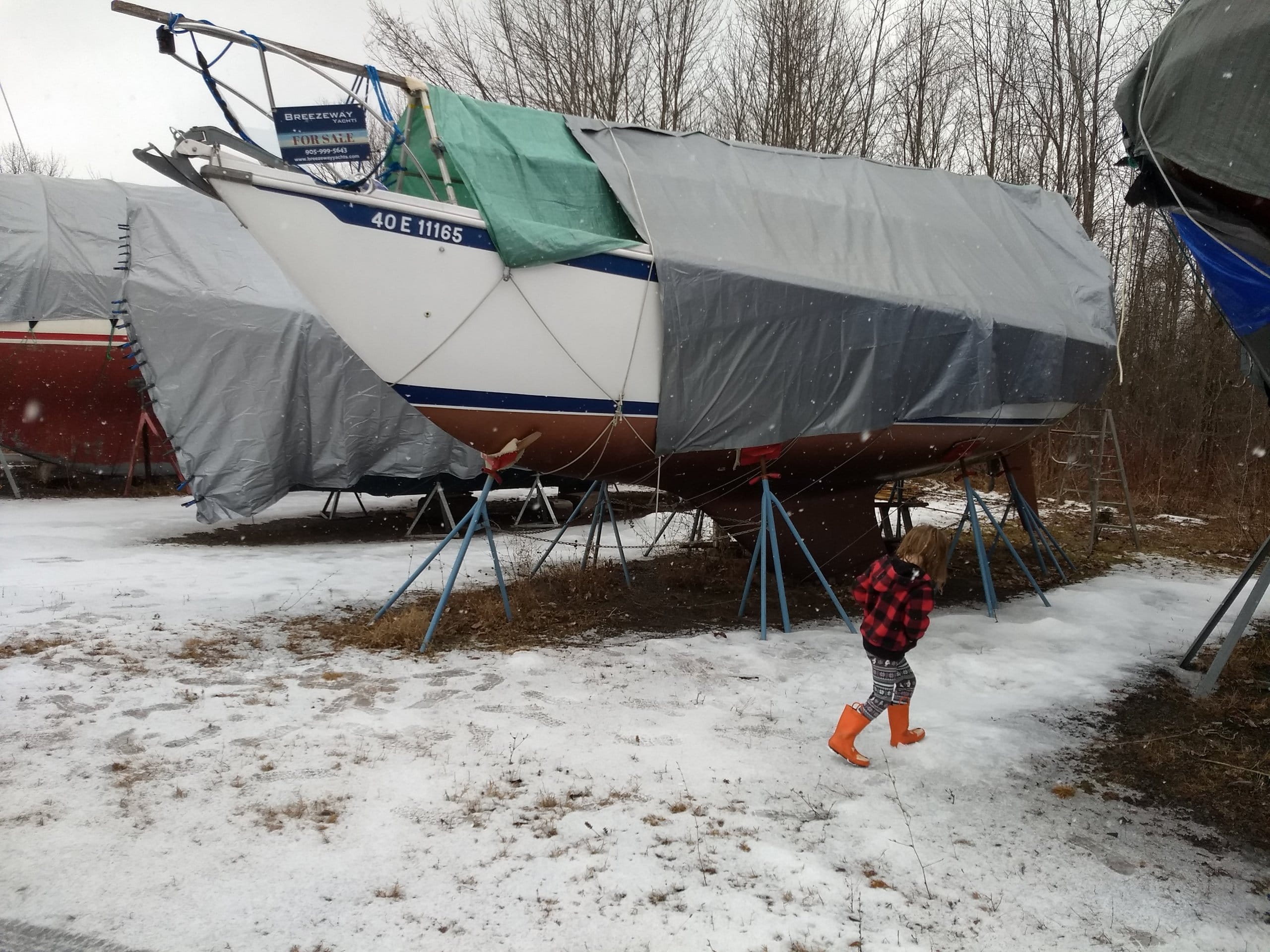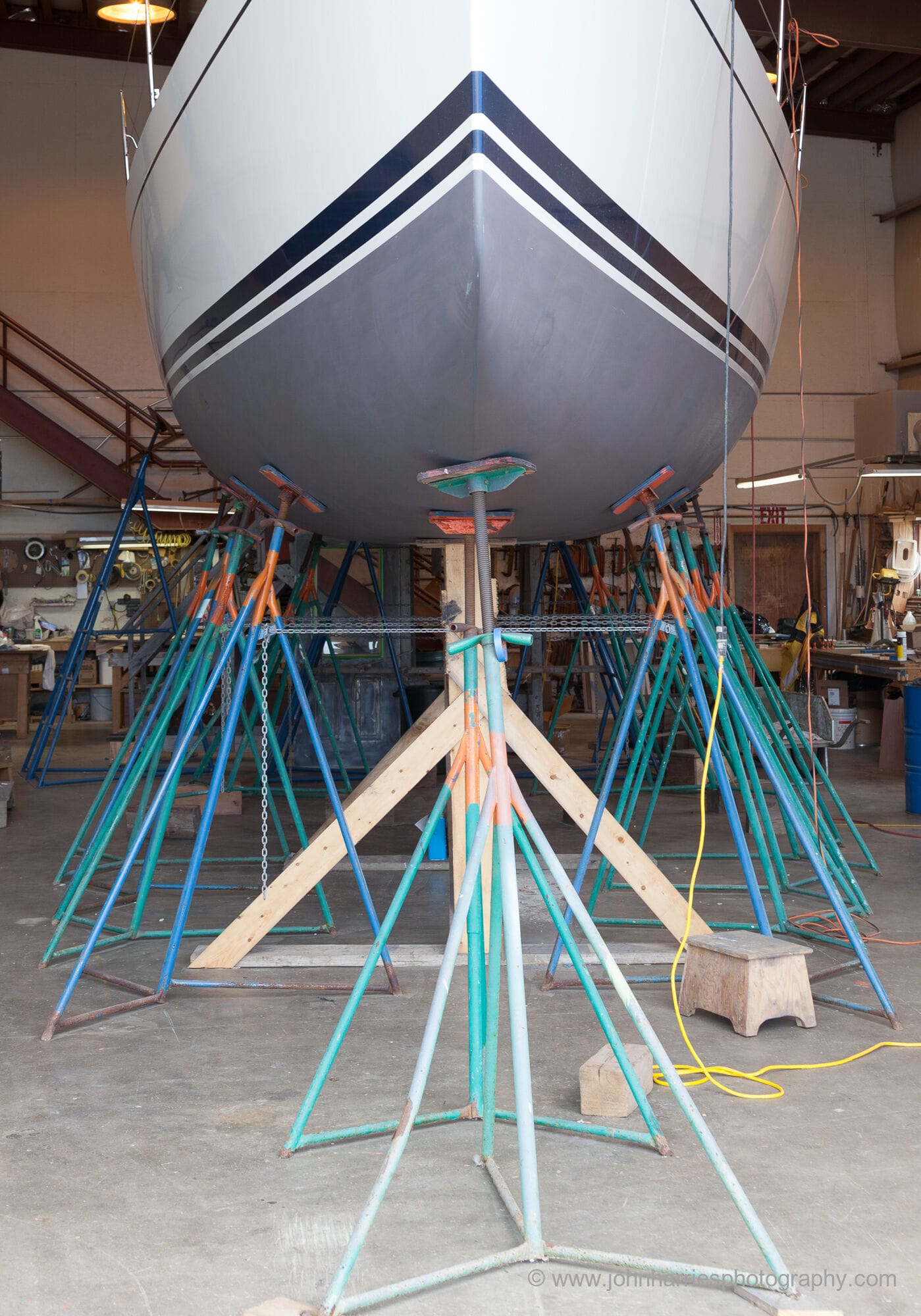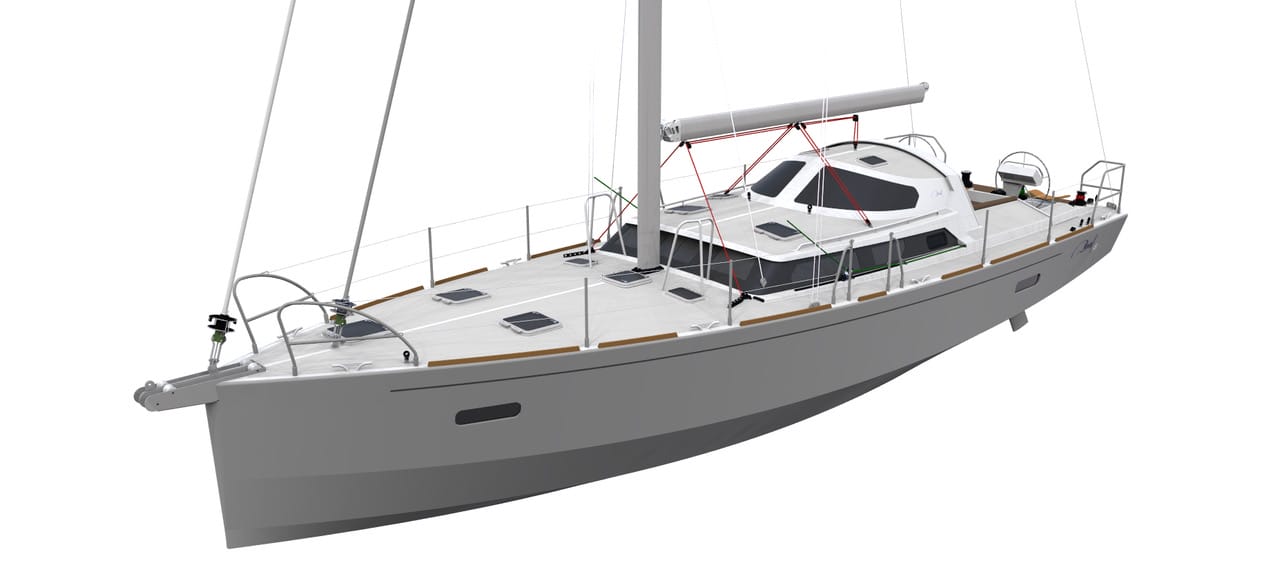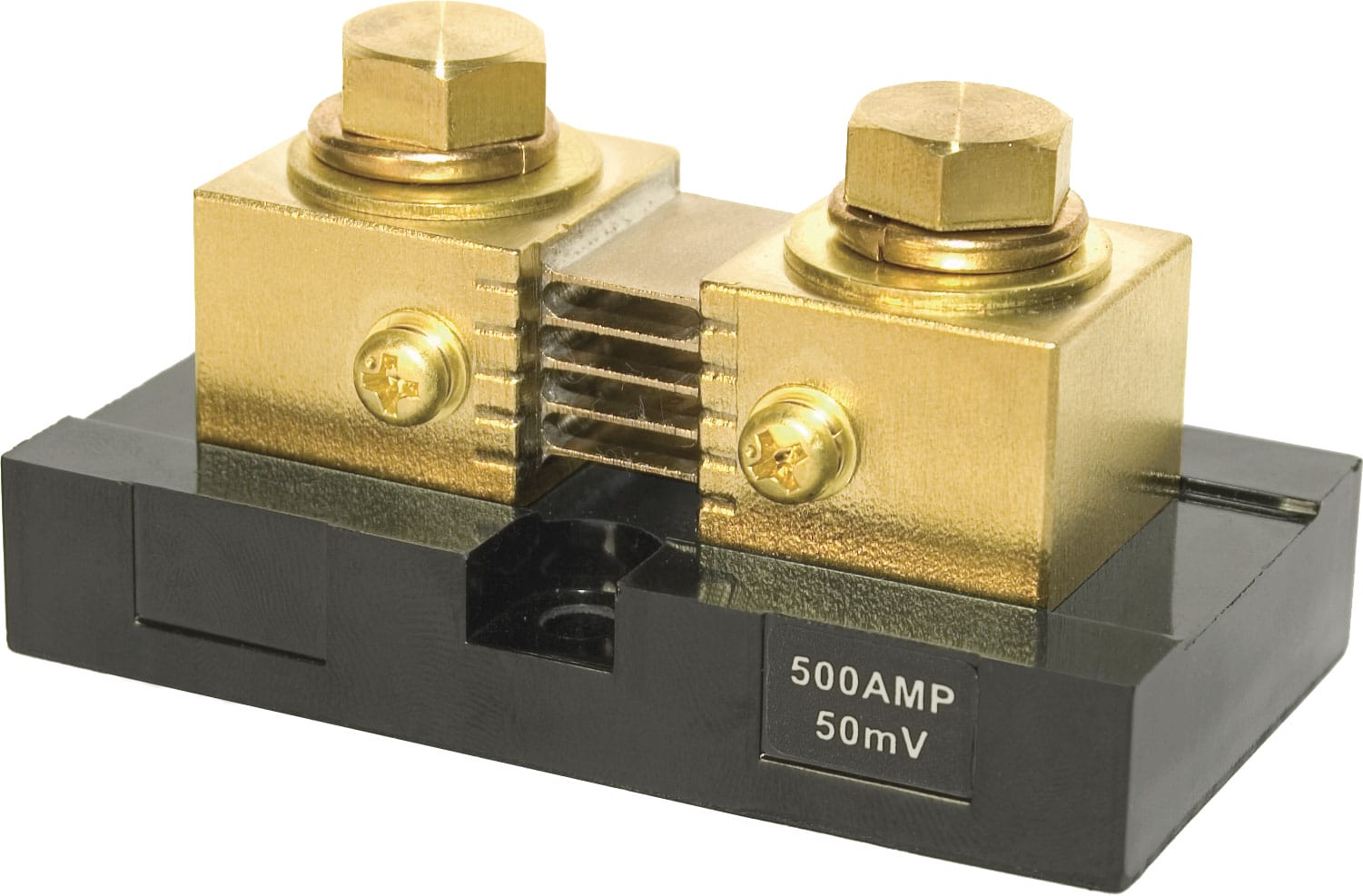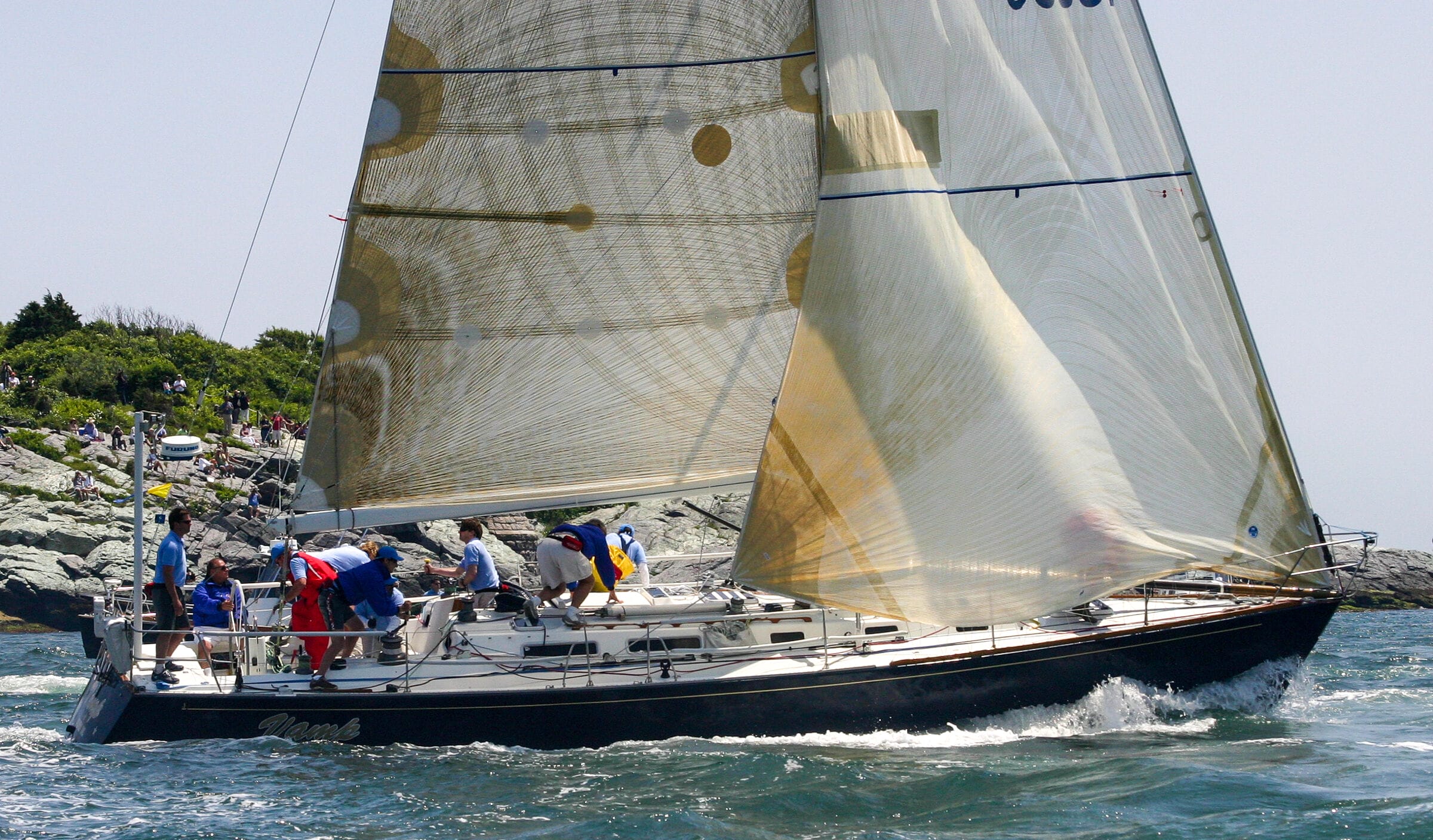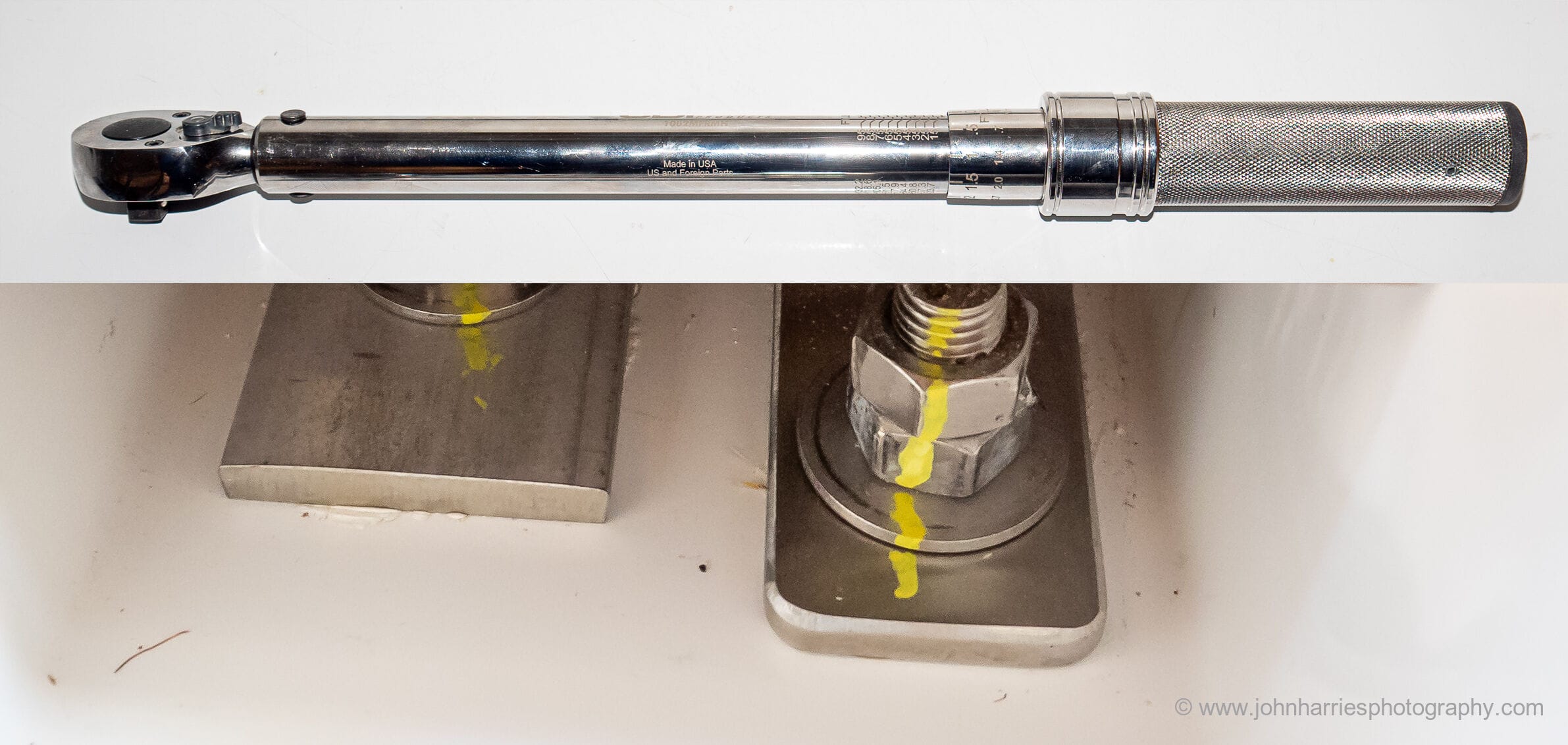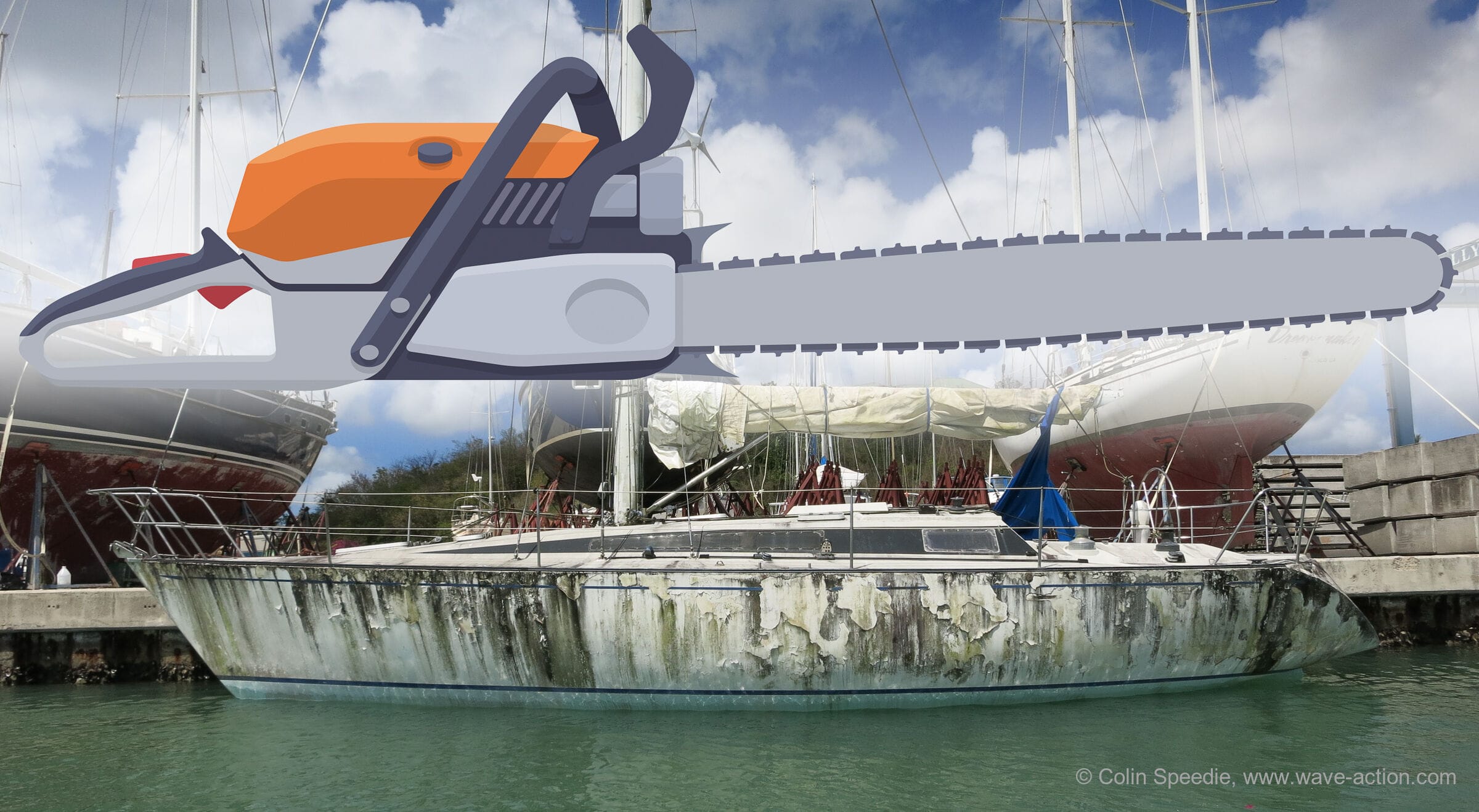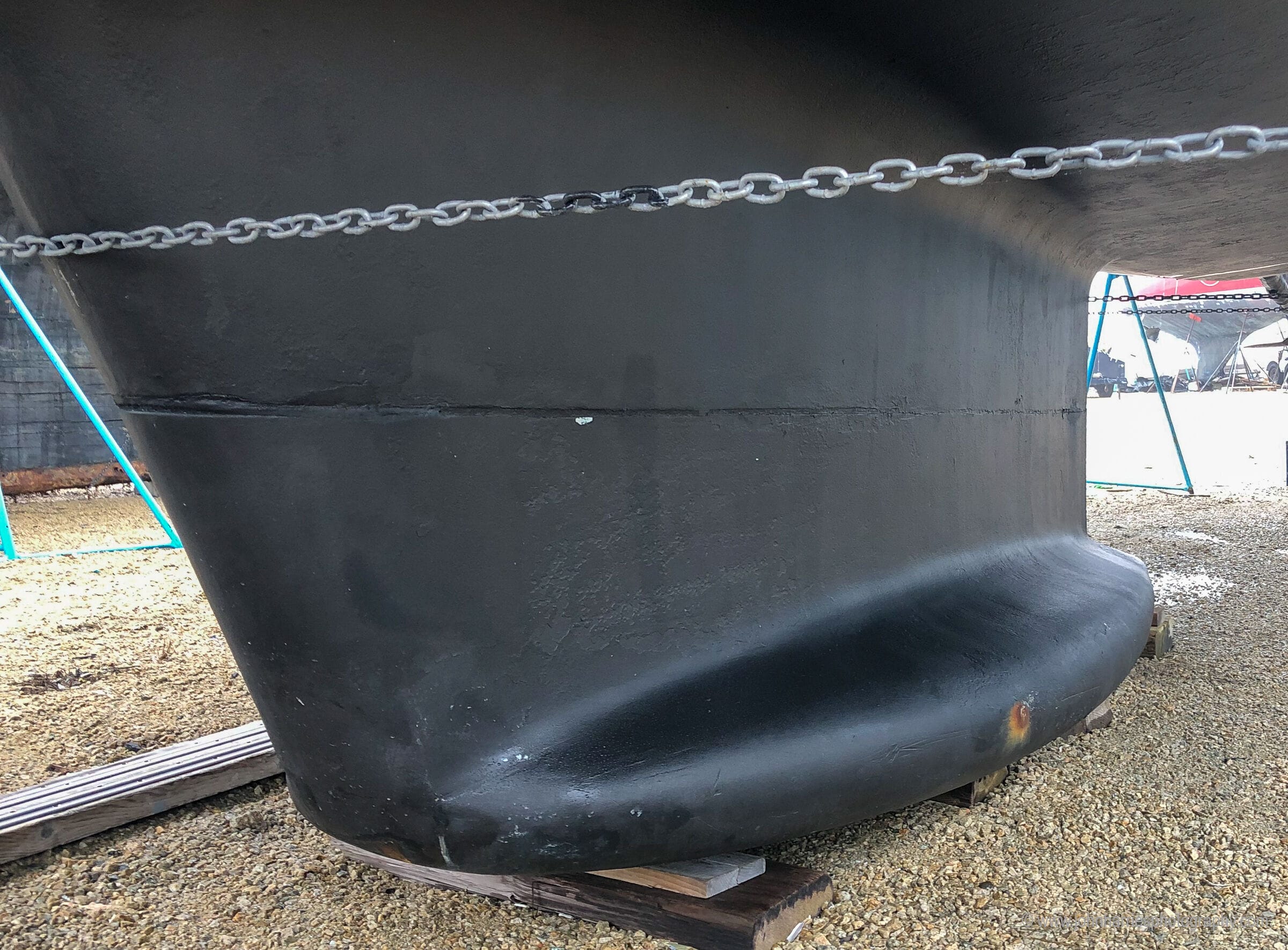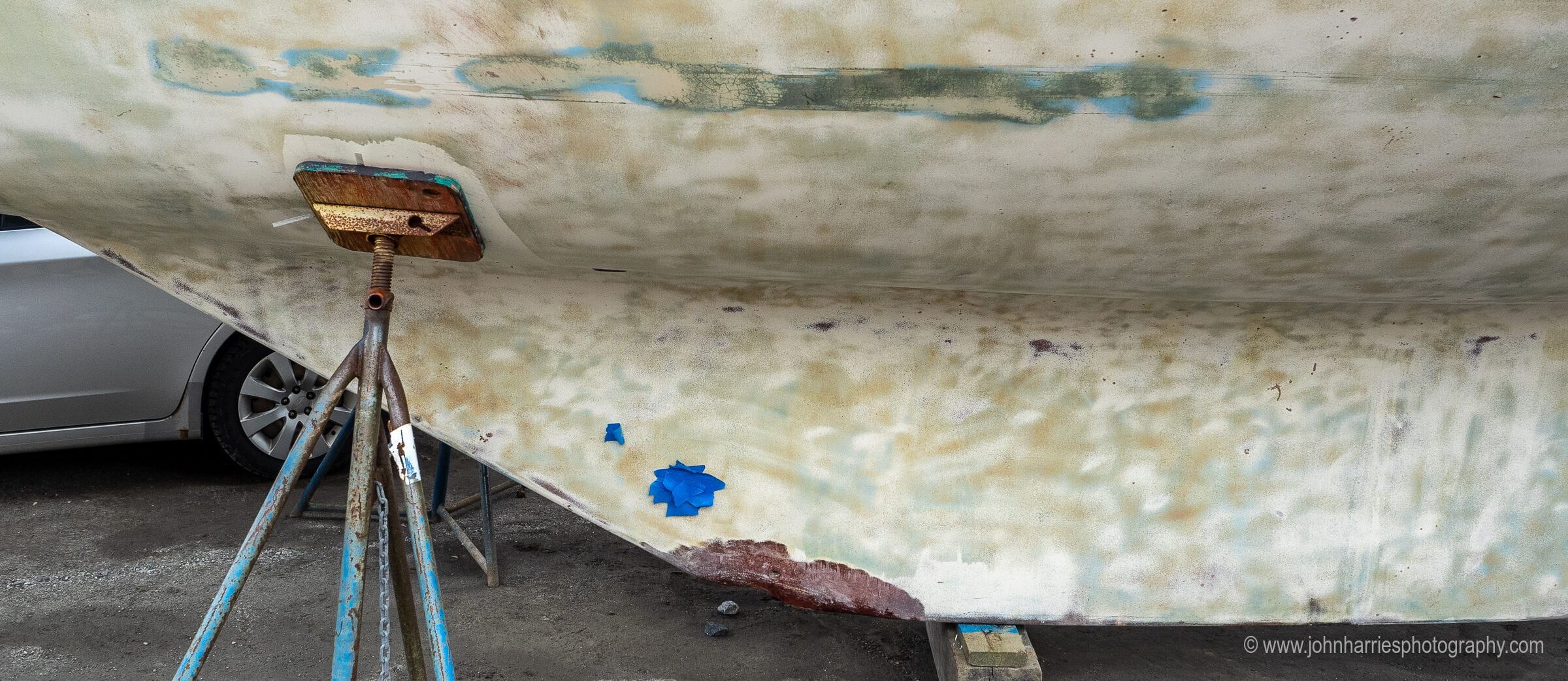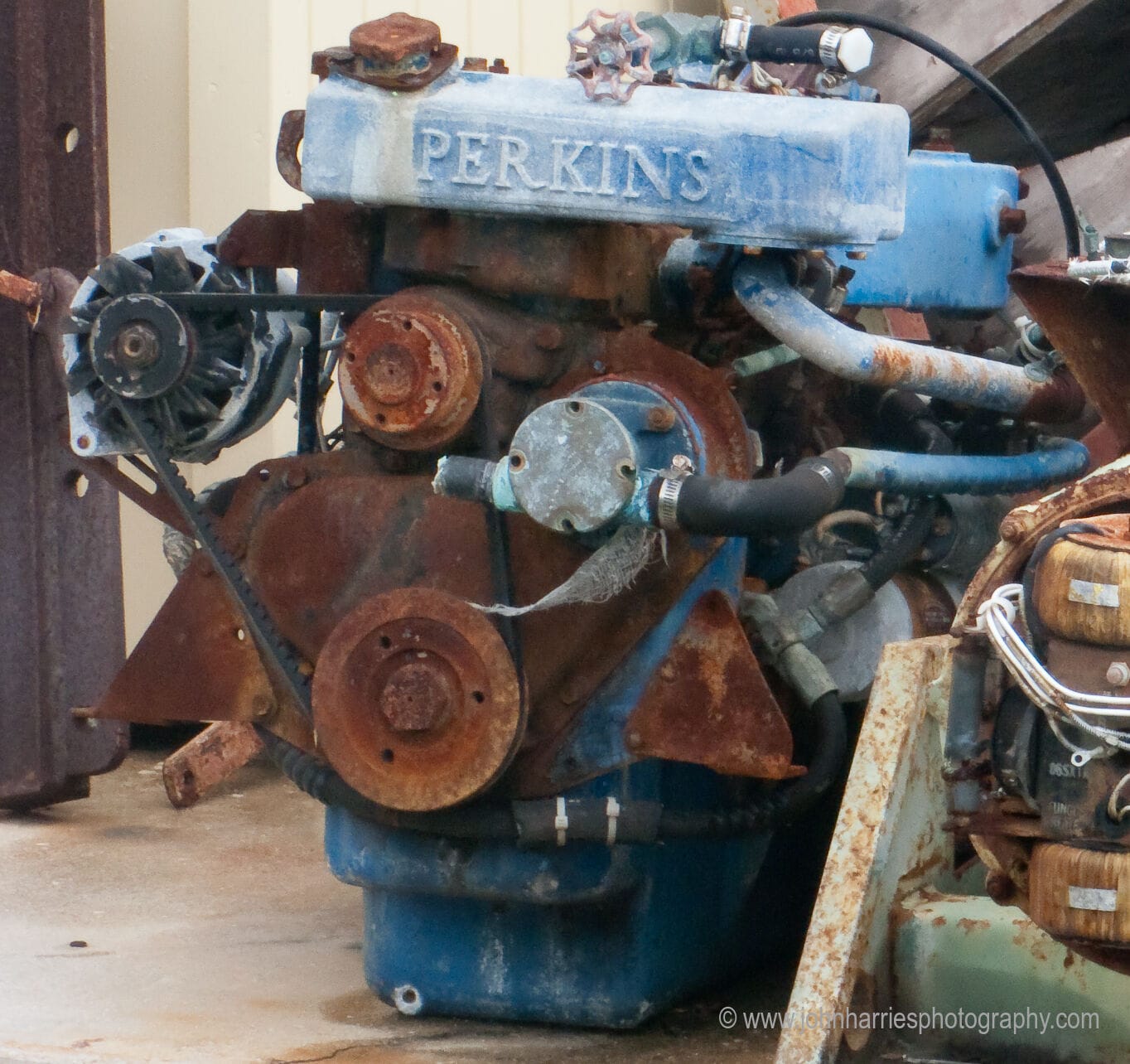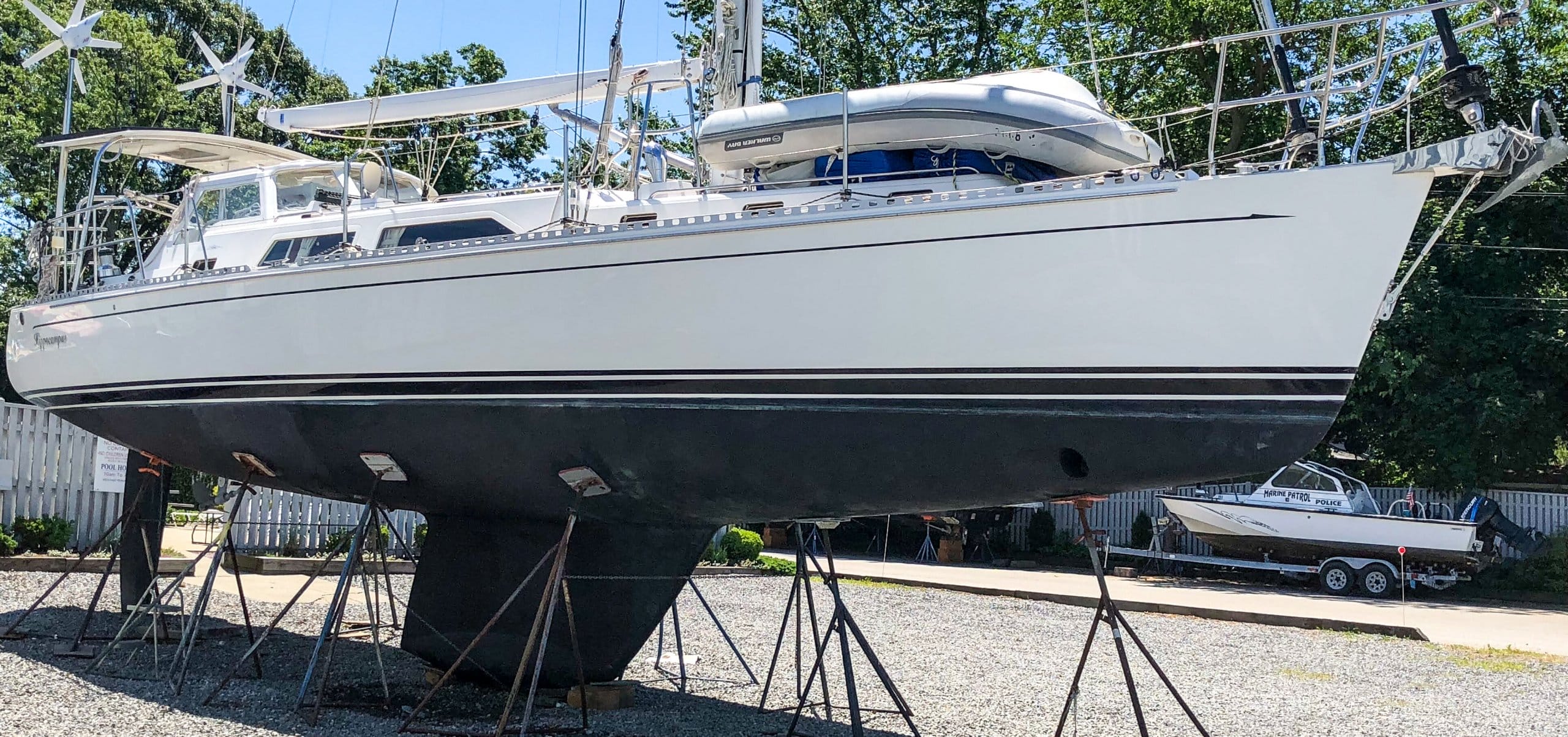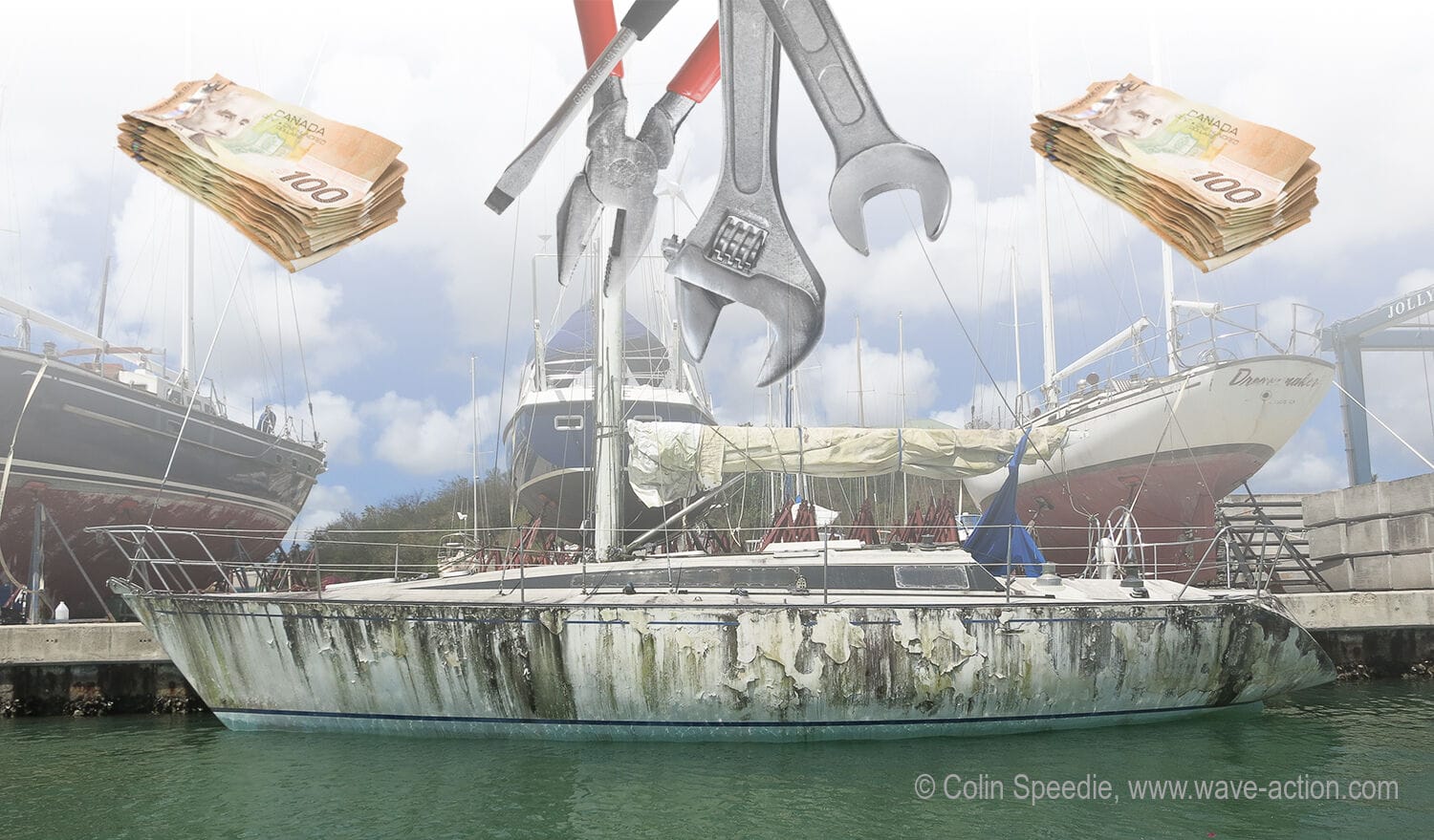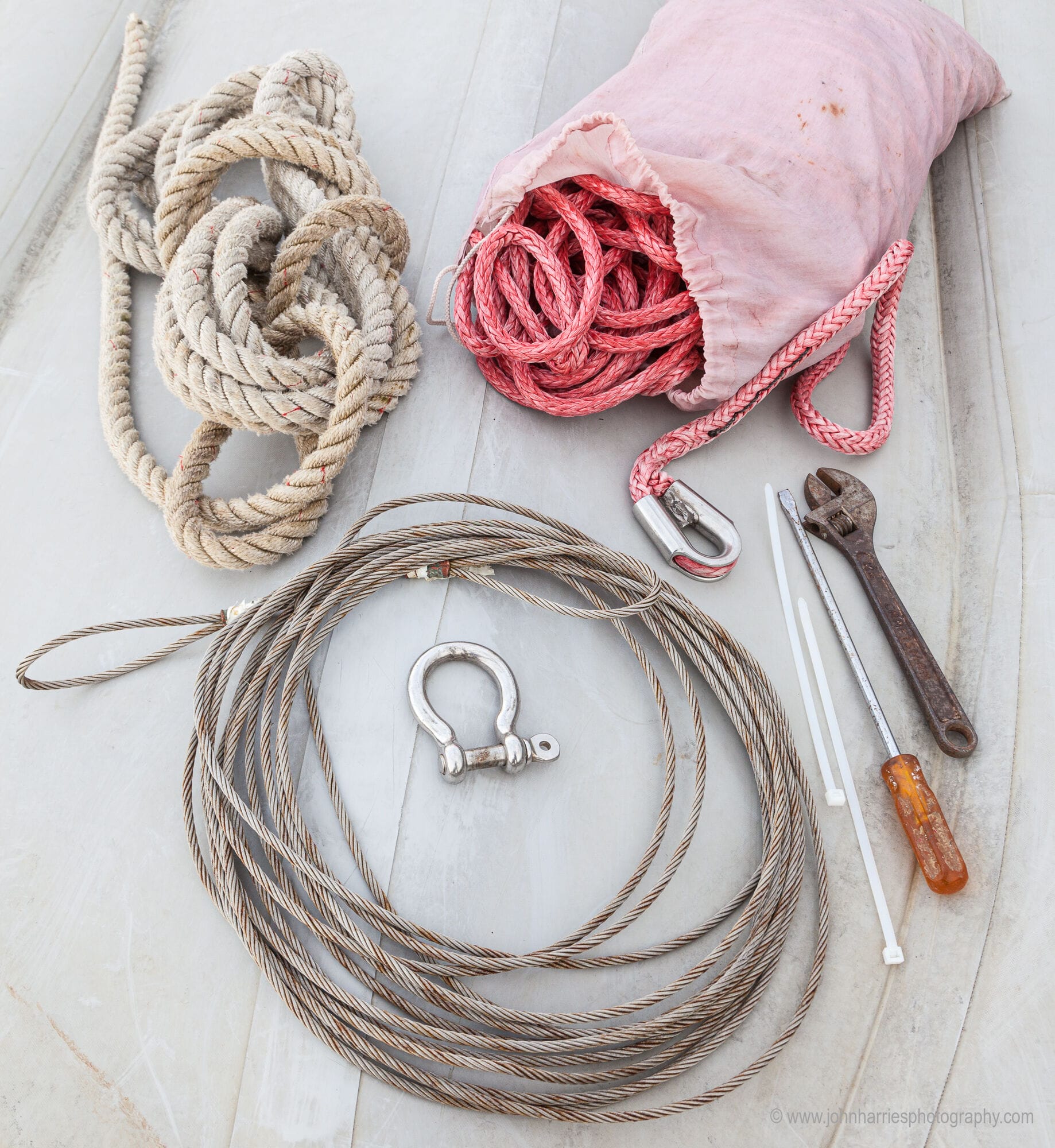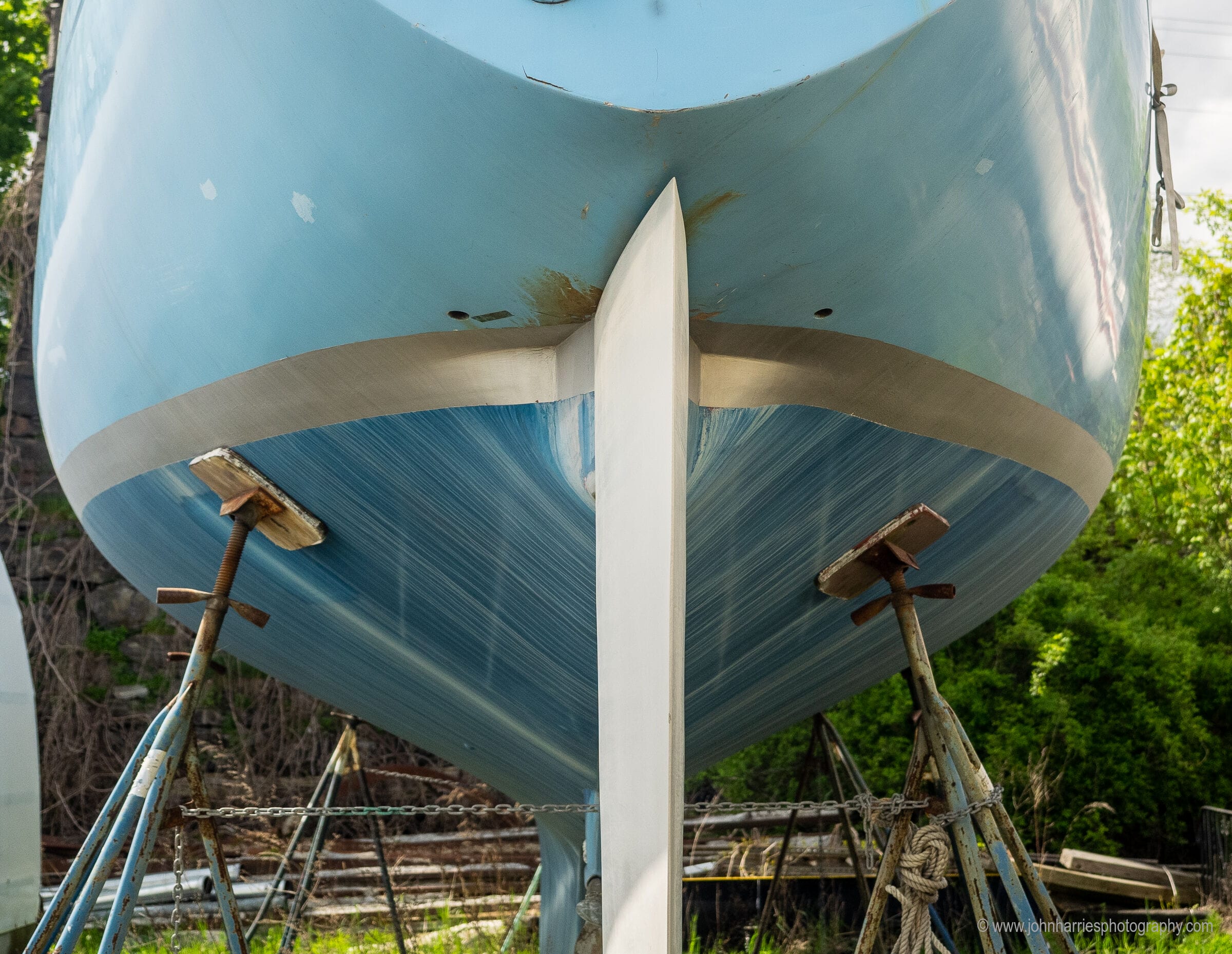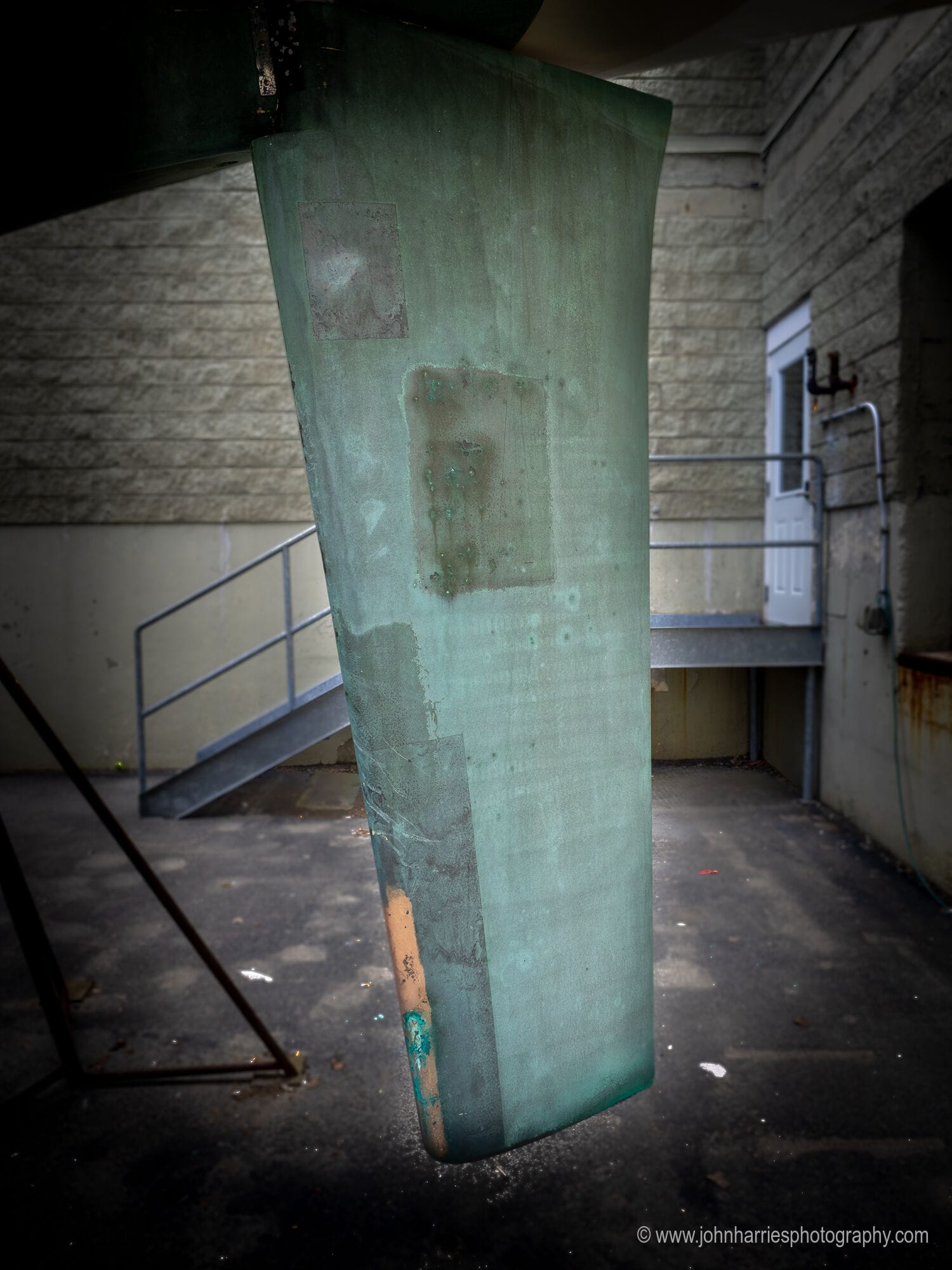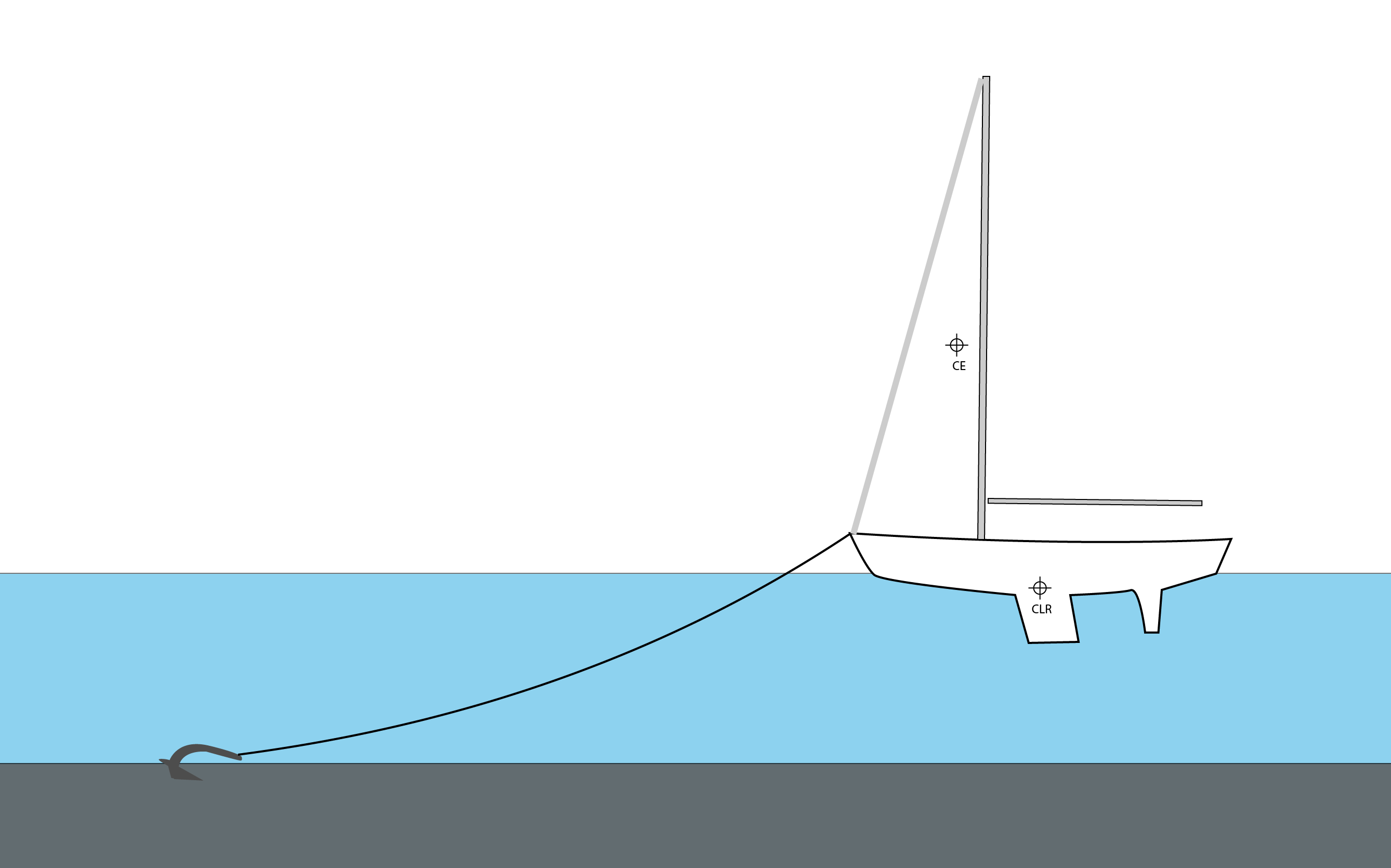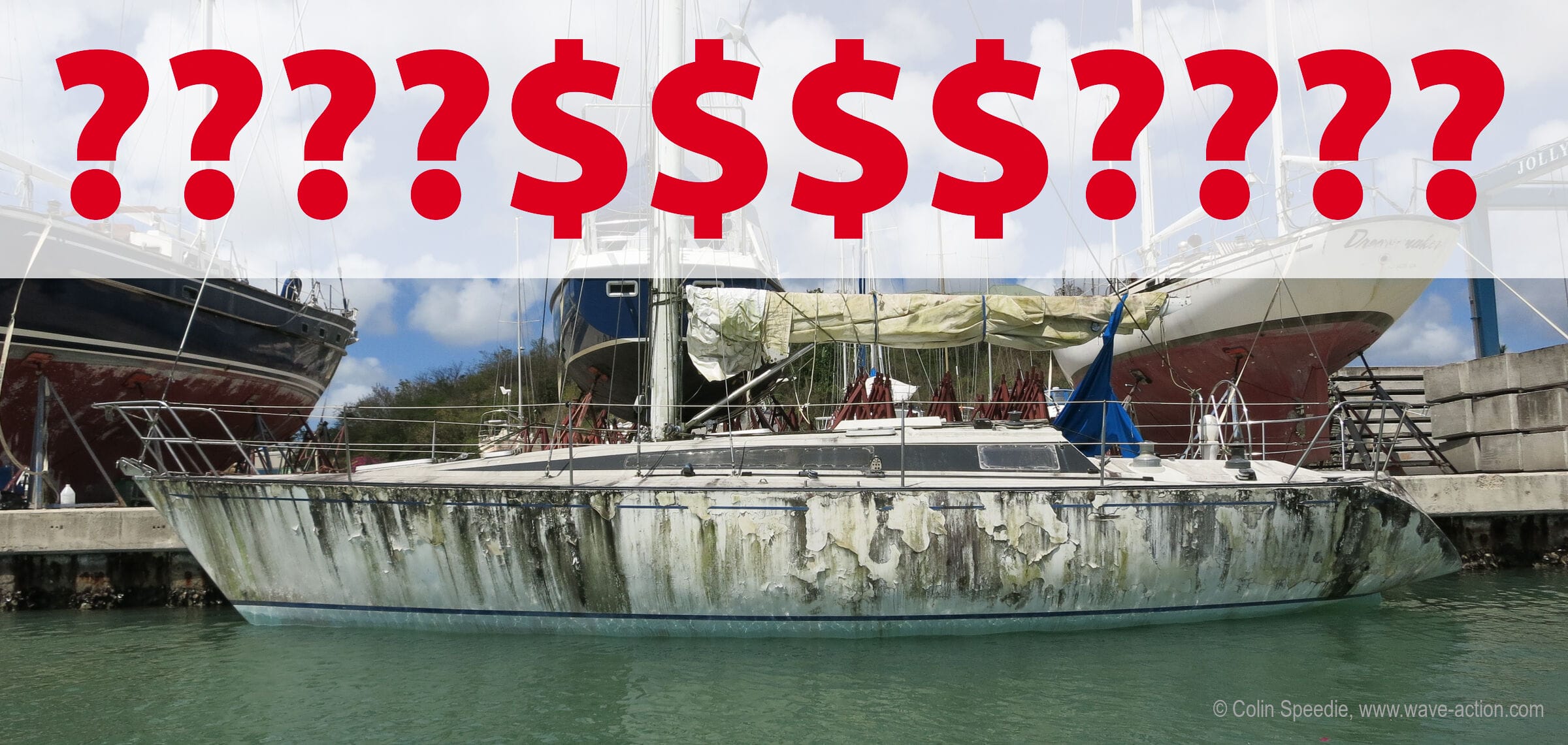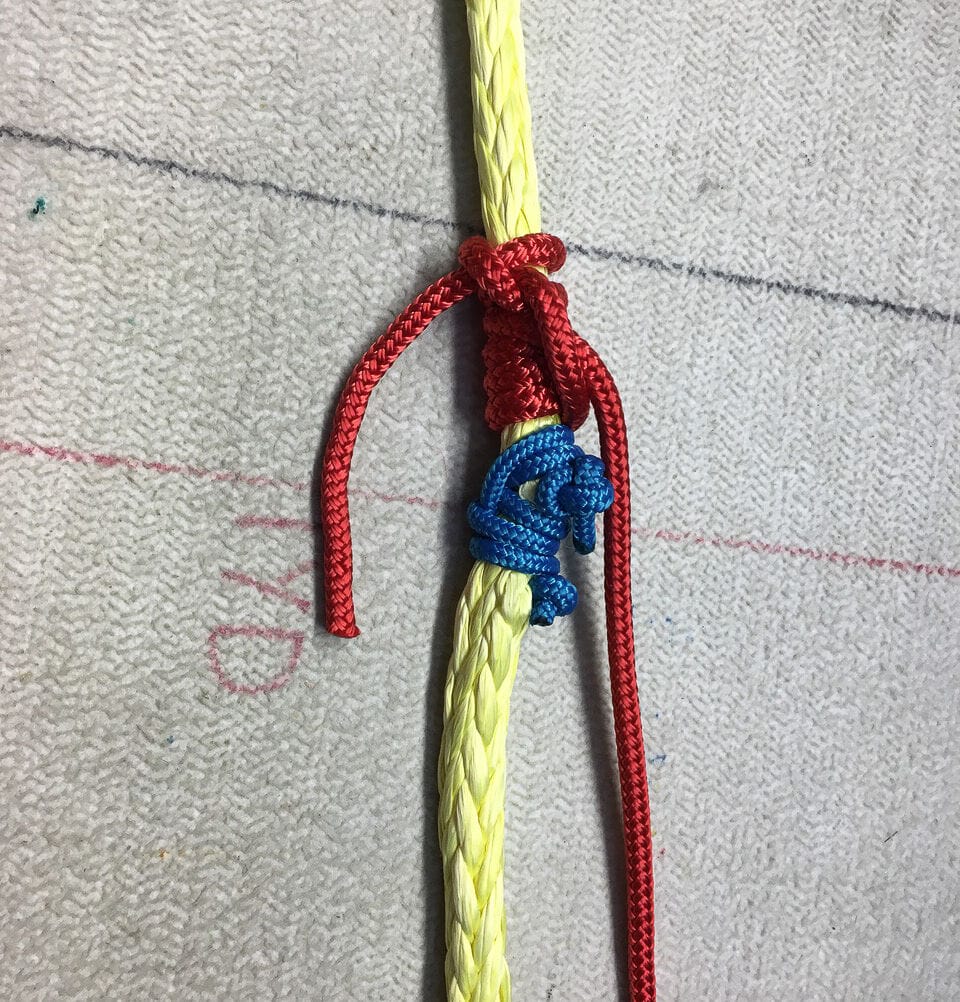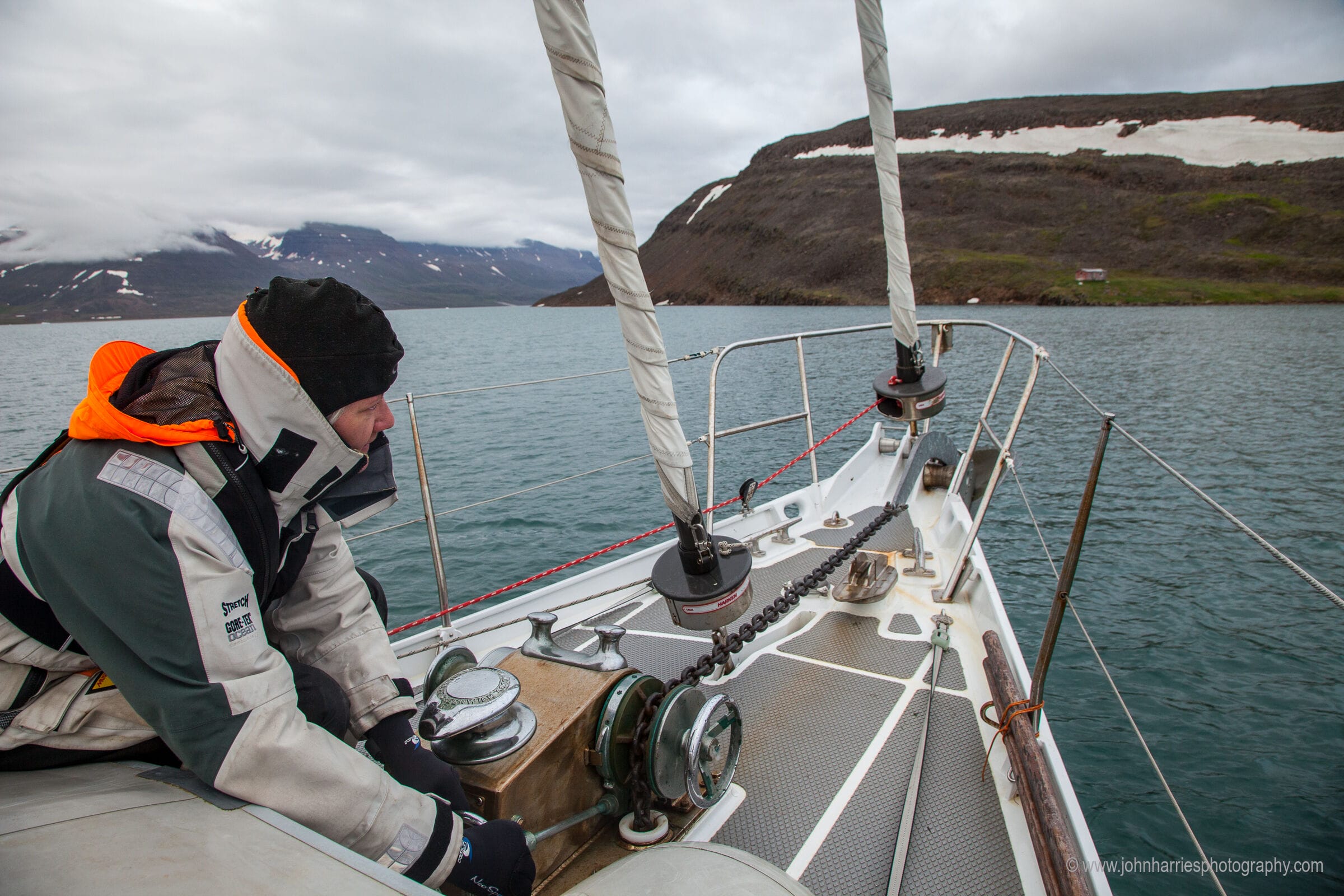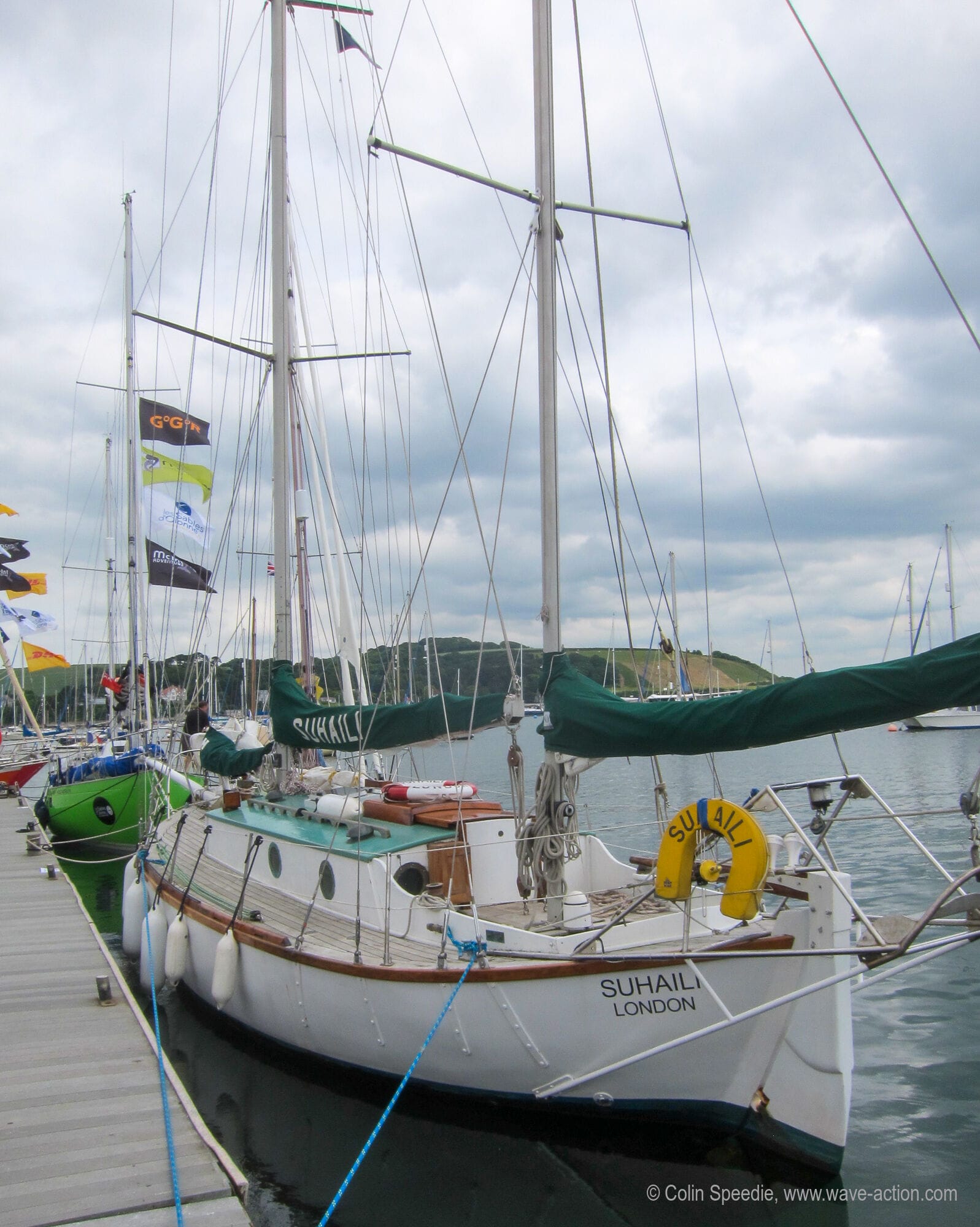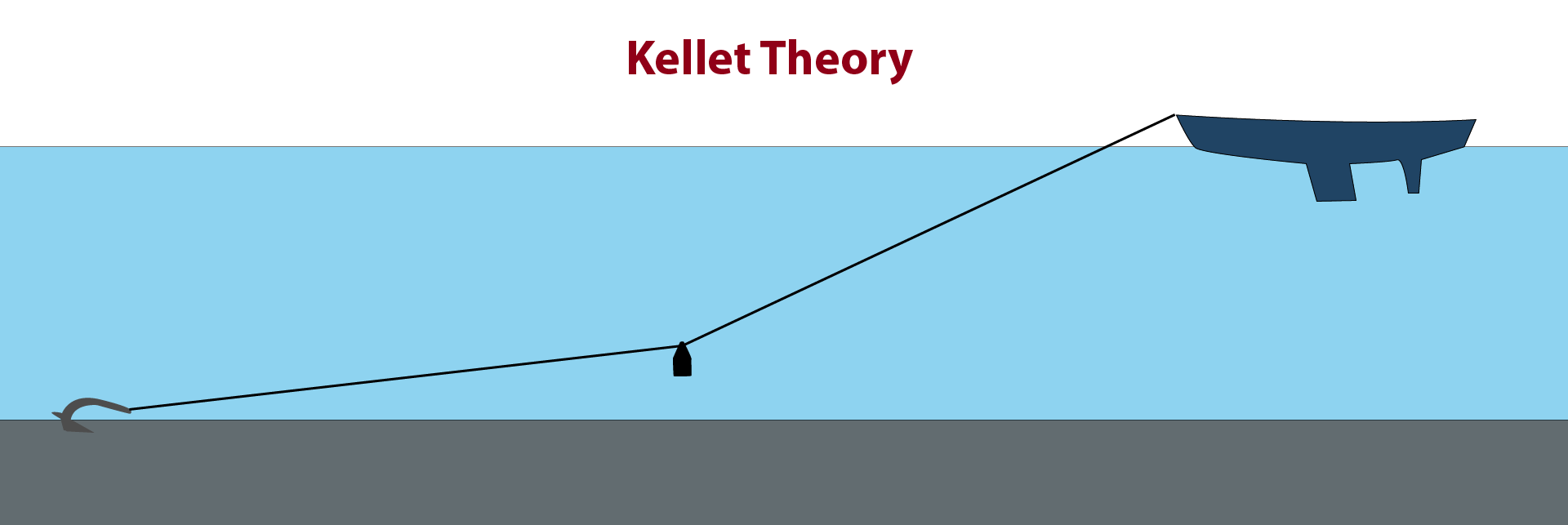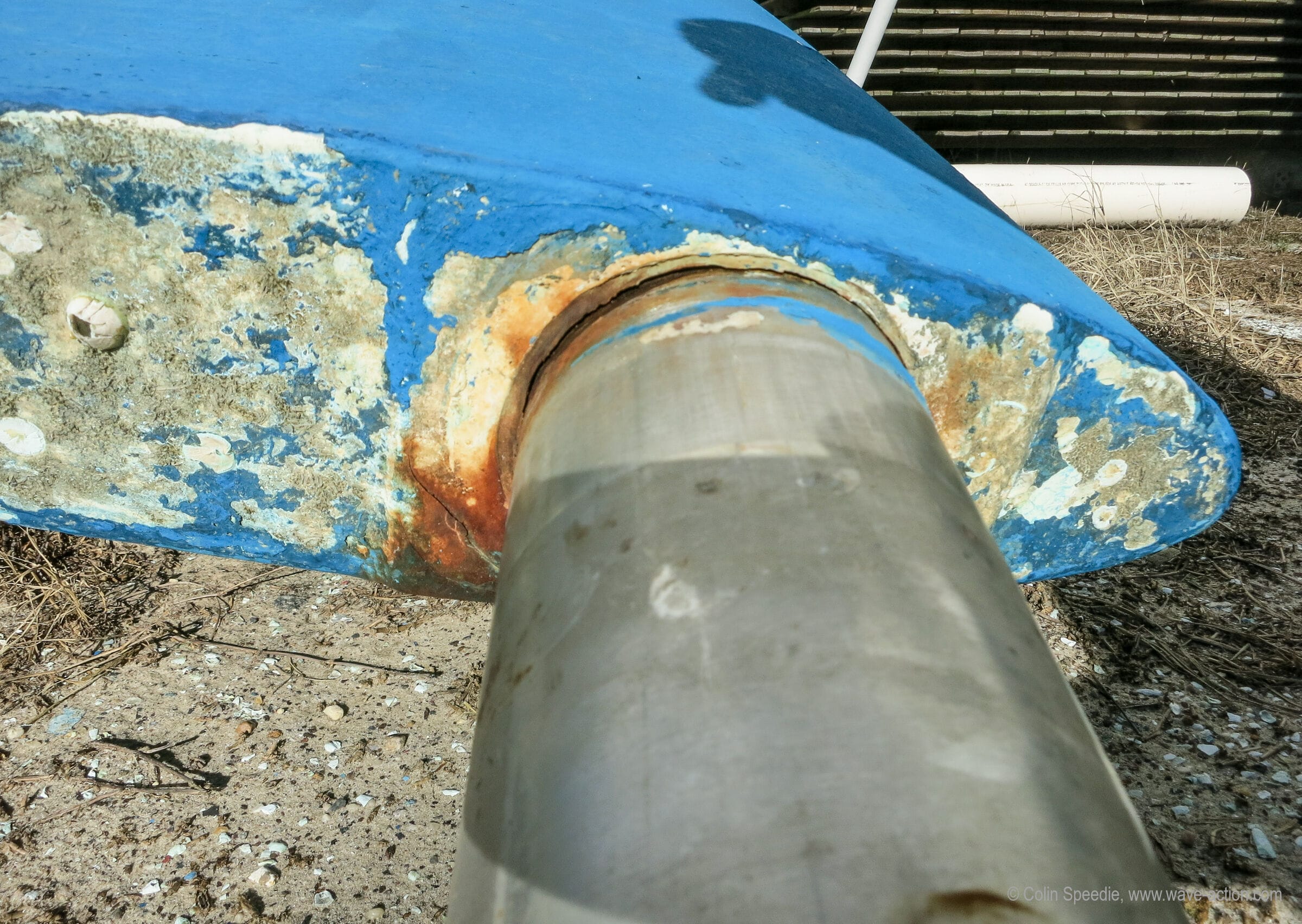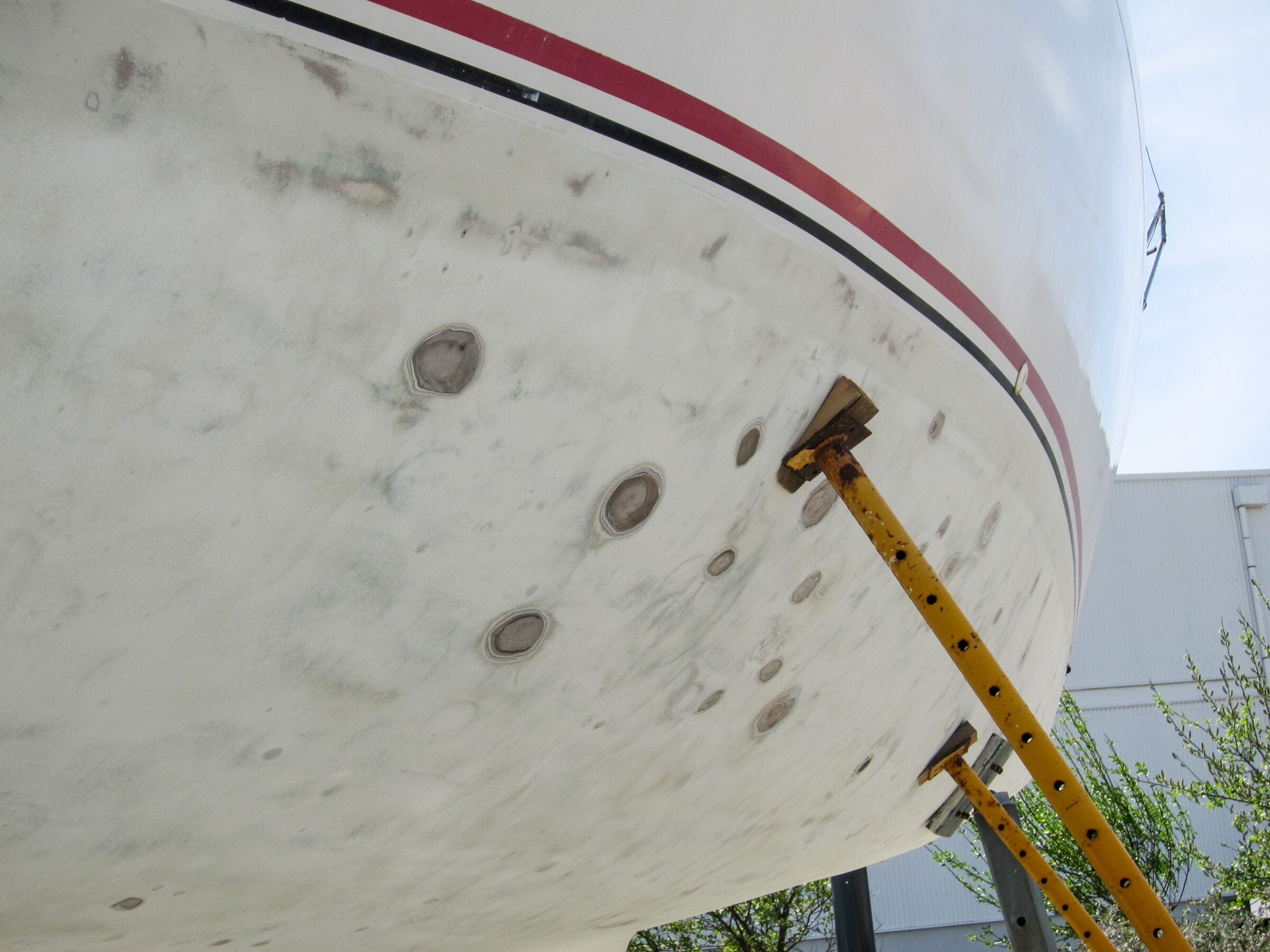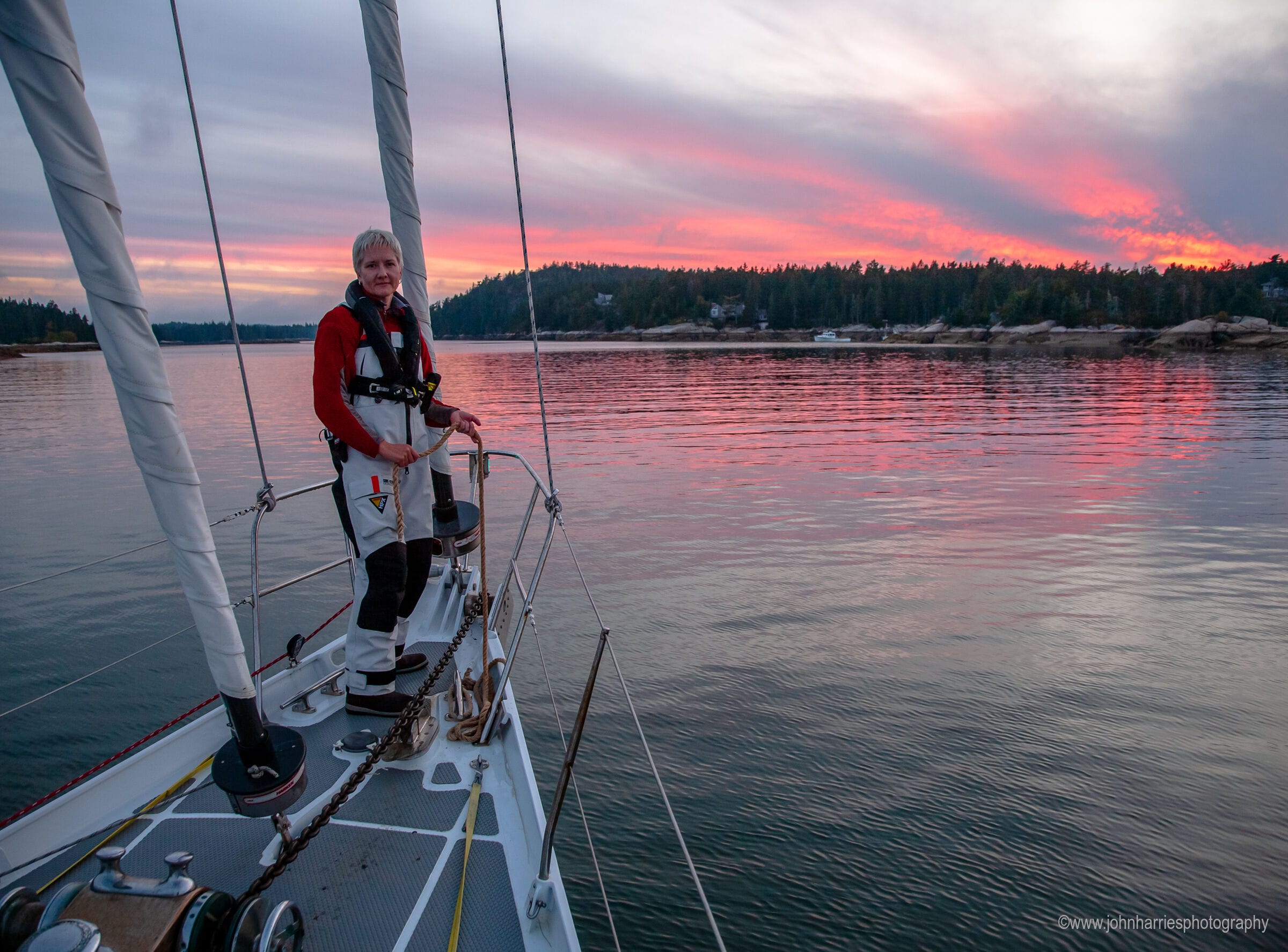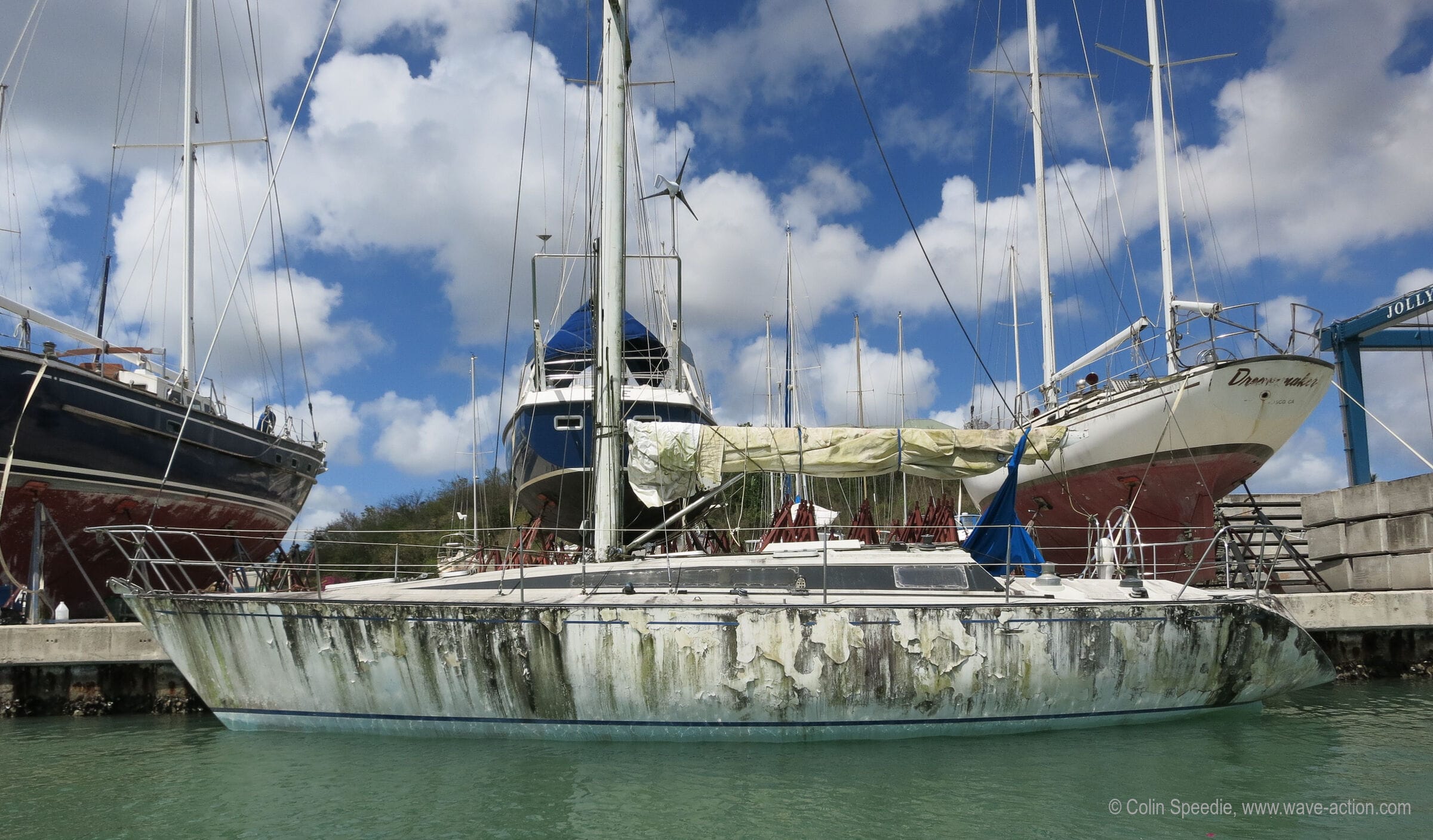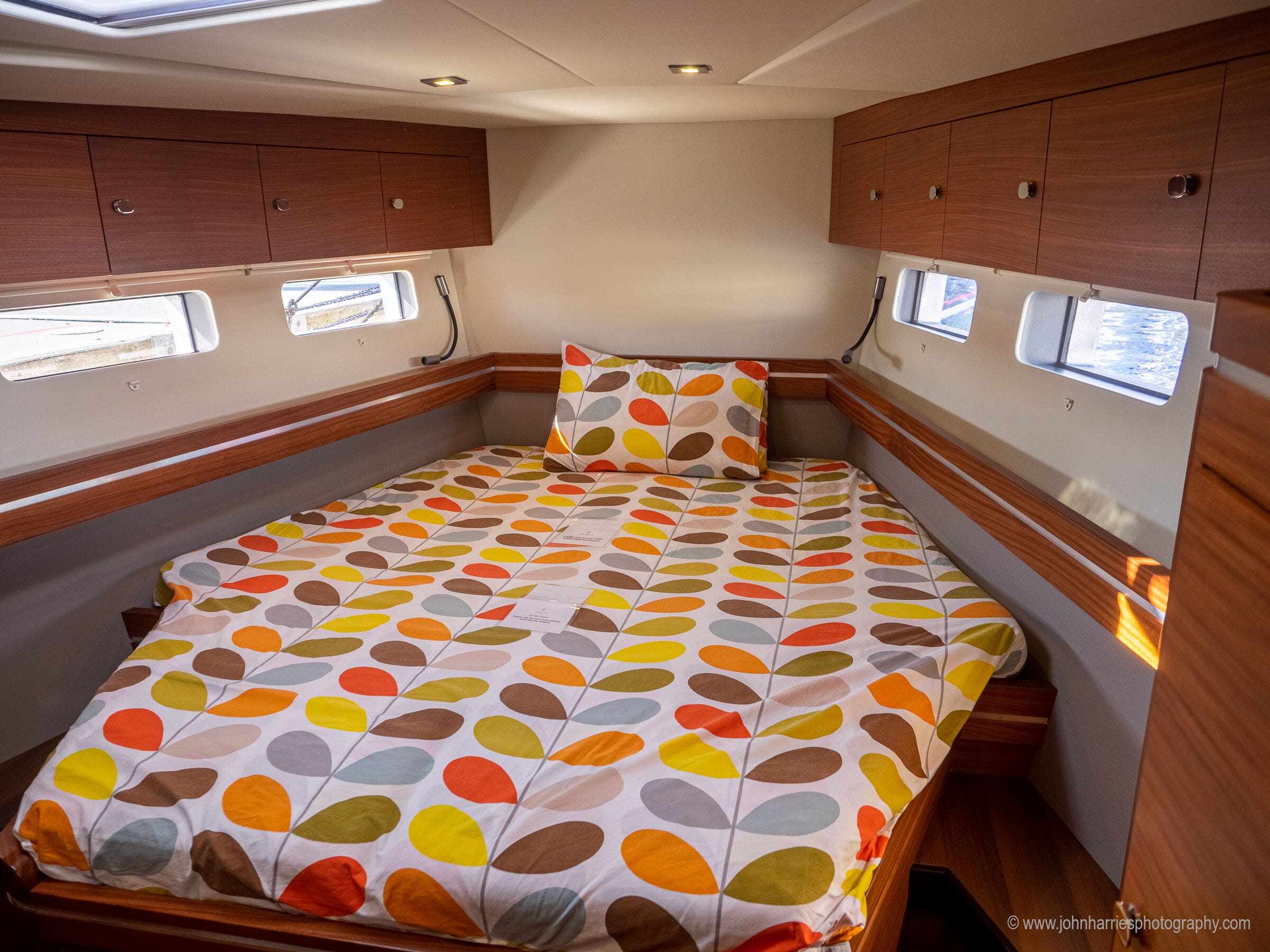MEMBERS
Click for TOC or scroll down for details
Articles in this topic:
- Sail Buying Tips
- Radar Collision Avoidance, Part 2—Turning Plotting Into Action
- Flawed Jackline Systems Revisited
- Radar Collision Avoidance, Part 1—Plotting
- TeamO Backtow Lifejacket/Harness Review
- 20 Practical Tips For Better Watchkeeping
- Reefing Tips
- 6 Tips For Mindful Watchkeeping
- How Many Reefs and How Deep?
- The Risks Of Sidedeck Jacklines Quantified
- 11 Tips For A Good Watch System
- Building a Robust and Practical Hard Dodger
- Tether Tension On A Dragging Crew Overboard
- 8 Offshore Cruising Boat & Gear Evaluation Tips
- Rigging Tips Part 2
- Spinlock Deckvest 6D Review
- Safe and Easy Offshore Sailing—When to Reef, Part 2
- Electrical Tips
- Why We Don’t Recommend Boom Brakes
- Safe and Easy Offshore Sailing—When to Reef, Part 1
- Building A Safer Boom Preventer, Part 3—The Details
- A Small-Boat Anchoring System
- When Is A Cruising Sailboat Too Big?
- Is Your Engine Properly Fused?
- Better Jacklines
- Building A Safer Boom Preventer, Part 2—Line and Gear Strength Calculator
- Building A Safer Boom Preventer, Part 1—Forces and Angles
- Surviving Storms While Coastal Cruising—21 Preparation Tips
- Rebuilding a Cobra Yacht Steering System—Reassembly
- Surviving Storms While Coastal Cruising—9 Tips for Anchorage and Harbour Selection
- Rebuilding a Cobra Yacht Steering System—Disassembly and Inspection
- Surviving Storms While Coastal Cruising—12 Strategy Tips
- 10 Reasons Why Hybrid Lithium Lead-Acid Systems are a Bad Idea
- Converting a Racing Sailboat to a Fast Cruiser—Performance and Rig
- Hurricane Mooring Weight Recommendation
- Lithium Buyer’s Guide—Budget: Economy Options
- Applying Power and Torque
- Hurricane Mooring Pennant Photo Article
- Understanding Power and Torque
- Lithium Buyer’s Guide—Budget: High End System
- Close to Home, Yet Far Away
- Wakespeed WS500 Compared To ARCO Zeus—What Matters
- 63 Cruising Boat Maintenance Tips
- Adventure 40 Electrical System—Part 1, Voltage and Batteries
- Deck Hardware Mounting Photo Essay
- Lithium Battery Buyer’s Guide—Fusing
- The Rolling Refit Continues
- Lithium Batteries Buyer’s Guide—Current (Amps) Requirements and Optimal Voltage
- The Zen of Sail Covers
- Lithium Batteries Buyer’s Guide—Balancing and Monitoring
- Selecting The Right Hull Form
- Lithium Batteries Buyer’s Guide—BMS Requirements
- Why We Have an eWincher on a Small Boat
- Electronic Chart Dangers
- Review of Ocean Signal PLB3 Against MOB1
- Weather Analysis—Part 2, Strategic
- Weather Analysis—Part 1, Tactical
- Yes, You Can Have an Offshore Sailboat For Less Than $US100,000
- Spade Anchor Failure, Update and Summary
- Weather Analysis—Hardware and Software
- Bilge Alarms And Monitoring
- Bent Spade Anchor Analysis
- 9 Tips to Assess Weather Forecast Accuracy
- Easily Driven Boats Are Better
- Sailing a New-To-Us Boat Home—What Could Go Wrong?
- Replacing Diesel-Generated Electricity With Renewables, Part 2—Case Studies
- Replacing Diesel-Generated Electricity With Renewables, Part 1—Loads and Options
- How Weight Affects Boat Performance and Motion Comfort
- Adventure 40 Cockpit 2.0
- Falmouth For Orders
- Watt & Sea Hydrogenerator Buyer’s Guide—Cost Performance
- To Sea At Last
- 10 Tips To Save Your Engine From Overheating
- Safety Inspection and Gear For a New-To-Us Boat
- Fire Extinguishers We Have Bought and Stuff We Learned
- Liferafts For Cruisers—Positioning and Mounting
- Starting With The Basics On A New-To-Us Cruising Boat
- Going Up The Mast—More Improvements
- Liferafts For Cruisers—40 Years of Real-World Experience
- Nine Autopilot Usage Tips and Hacks
- Liferafts For Cruisers—Purchase Criteria
- How To Tune An Autopilot To Steer Better—Part 2
- Finding and Buying a Dream
- Adventure 40 Deck-2.0
- How To Tune an Autopilot to Steer Better—Part 1
- Autopilot Buyer’s Guide
- Storm Strategy—Fore-Reaching
- Colin and Louise Have a New Boat
- Eight Steps to Get Ready For Lithium Batteries
- Q and A—Trucking a Boat
- A Real World Tested Tool Kit For Cruisers
- Five Boat Lift Usage Tips
- Adventure 40 Reveal—Salon and Forward Cabin
- Balancing Battery Bank and Solar Array Size
- Going Up The Mast at Sea
- Adventure 40 Reveal—Galley, Head, and Aft Storage
- Gear Leveling and Mounting Hack
- Going Up The Mast—Four Dangerous But Common Mistakes
- How To Do Amateur Engineering¹
- Going Up The Mast—Our System
- Going Up The Mast—Fundamentals
- Adventure 40 Reveal—On Deck
- Going Up the Mast—An Industrial Fall Prevention Approach
- Adventure 40 Reveal—Hull, Cockpit, and Rig
- In-Mast, In-Boom, or Slab Reefing —Performance, Cost and Safety
- In-Mast, In-Boom, or Slab Reefing—Convenience and Reliability
- Cross-Bank Battery Charging—DC/DC Chargers
- Cross-Bank Battery Charging—Splitters and Relays
- Battery Bank Separation and Cross-Charging Best Practices
- How Hard Can We Charge Our Lead-Acid Batteries?
- Choosing & Installing Battery Switches
- Battery Containment—Part 1
- 5 Safety Tips For Working on Boat DC Electrical Systems
- Building a Seamanlike Lithium Battery System
- Two More Shore Power Safety Upgrades
- 9 Tips To Select Seamanlike Gear
- Download Cruising Sailboat Rig Checklist
- When Stuff Goes Wrong At Sea
- 8 Tips To Prevent Lithium Battery Black Outs
- Why Lithium Battery Load Dumps Matter
- Cruising Sailboat Roller Furler and Track Inspection
- Positioning of Wood Plugs For Seacocks
- The True Price of Autopilots & Vane Gears
- Cruising Sailboat Rig Wiring and Lighting Inspection
- 7 Checks To Stop Our DC Electrical System From Burning Our Boat
- 11 Self-Steering Vane Gear Installation and Usage Tips
- Why Most New-To-Us Boat Electrical Systems Must Be Rebuilt
- Cruising Sailboat Running Rigging Inspection
- 12 Cruising Boat Maintenance Tips
- WakeSpeed WS500—Best Alternator Regulator for Lead Acid and Lithium Batteries
- Cruising Sailboat Standing Rigging Inspection
- Cruising Sailboat Spar Inspection
- Test Sail and Review of The Boréal 47.2
- Going Alongside (Docking)—12 More Tips and Tricks
- John Goes Sailboat Racing and Learns Stuff
- Protecting Our Boat’s Underwater Metals From Corrosion
- Going Alongside (Docking) in Current—Backing In
- Details Matter—Engine Failure at Sea
- Going Alongside (Docking) in Current—Turning in Confined Spaces
- Going Alongside (Docking) in Current—Fundamentals
- Helping a Member Choose an Anchor
- A Good First Aid Kit
- Why I Won’t Power Our Boat With a Portable Generator
- Setting and Striking a Spinnaker Made Easy and Safe
- Check Your Boat Shore Power System
- Our New Boat Selection Process—Fitness For Mission
- Cruiser’s Tool Kit—Wrenches
- 29 Tips To Get Insurance For Offshore Voyaging—Negotiating Cover
- 29 Tips To Get Insurance For Offshore Voyaging—Us and Our Boat
- Cruiser’s Power Tool Kit
- Leaving a Dock Against an Onshore Wind—Part 2
- Leaving a Dock Against an Onshore Wind—Part 1
- Getting Insurance For Offshore Voyaging—Understanding The Problem
- 14 Tips To Come Alongside Single-Handed—Part 2
- 14 Tips for Coming Alongside Single-handed—Part 1
- Integrating and Documenting NMEA 0183 and 2000 Networks
- Two More Anchor Selection Criteria
- Making Anchor Tests More Meaningful
- Choosing A Cruising Boat—Shade and Ventilation
- When Electric Drive Works For a Cruising Sailboat
- Roller Furling Headsail Risks and Rewards
- Choosing a Cruising Boat—Shelter
- Q&A—Sailboat Performance, When The Numbers Fail
- Offshore Sailboat Winches, Selection and Positioning
- Best Offshore Boat Cockpit Cushions
- Buying a Boat—A Different Way To Think About Price
- Safety: We Can’t Do Or Even Learn About It All
- Cockpits—Part 2, Visibility and Ergonomics
- Cooking Options For Live-aboard Voyagers—Part 2, Liquid Fuel
- Cooking Options For Live-aboard Voyagers—Part 1, Electric
- Cockpits—Part 1, Safe and Seamanlike
- Should Your Boat’s DC Electrical System Be 12 or 24 Volt?—Part 2
- Should Your Boat’s DC Electrical System Be 12 or 24 Volt?—Part 1
- Topping Lift Tips and a Hack
- The Danger of Voltage Drops From High Current (Amp) Loads
- Rigid Vangs
- Maretron—Better NMEA 2000 Cabling
- Efficient Generator-Based Electrical Systems For Yachts
- Is Induction Cooking For Boats Practical?
- eWincher Electric Winch Handle Review—Part 3, Reliability and Summary
- eWincher Electric Winch Handle Review—Part 2, The Competition
- eWincher Electric Winch Handle Review—Part 1, Our Testing
- Second Level Thinking About Offshore Voyaging Boats
- SeaAngel SA15 AIS Crew Overboard Beacon Compared to The Ocean Signal MOB1
- Sailboat Deck Layouts
- US$30,000 Starter Cruiser—Part 2, The Boat We Bought
- US$30,000 Starter Cruiser—Part 1, How We Shopped For Our First Cruising Sailboat
- Washing Machines: Complexity and Space Considerations
- Planning a Refit— Keel Removal and Inspection
- Q&A Backing Out of a Bow-In Med Moor
- Two New Designs From Boréal
- Stupid Alternator Regulators Get Smarter…Finally
- Sail Area: Overlap, Multihulls, And Racing Rules
- Torquing Keel Bolts
- Refits—The Radical Option
- Non-Destructive Testing of Keel Bolts
- Cruising Rigs—Sloop, Cutter, or Solent?
- Offshore Sailboat Keel Types
- Outbound 46 Review—Part 2, Keel, Rudder, Bow Thruster, and Construction
- Planning and Budgeting an Engine Rebuild or Replacement
- Outbound 46 Review—Part 1, Hull Form
- Planning a Refit—Upfront Costs
- ShoreFasts—Part 3, The Gear
- ShoreFasts—Part 2, Example Setups Plus Tips and Tricks
- ShoreFasts—Part 1, When to Use Them
- Planning a Refit—Rudders, Repair or Replacement
- Planning a Refit—The Problem With Rudders
- Yawing at Anchor, The Theory and The Solution
- Planning a Refit—Boat Parameters
- Retrieval of Dyneema (Spectra) Series Drogues Solved
- Planning a Refit—It’s a Lot About You
- Anchoring—Chain: Stoppers, Termination and Marking
- A Sail Away Offshore Cruising Boat For Less Than US$100,000—Best Hull Material
- Anchoring—Kellets
- A Sail Away Offshore Cruising Boat For Less Than US$100,000—Rudders and Keels
- A Sail Away Offshore Cruising Boat For Less Than US$100,000—Decks, Hulls and SS Fittings
- Anchoring—Snubbers
- A Sail Away Offshore Cruising Boat For Less Than US$100,000—Introduction
- Four Hand Tools I Should Have Bought Years Ago
- The Garcia Exploration 45 Compared to The Boréal 47—Part 5, Interior, Summary and Price
- The Garcia Exploration 45 Compared to The Boréal 47—Part 4, Inside Watch Stations
- Insanely Cool Anchorage Toys
- The Garcia Exploration 45 Compared to the Boréal 47—Part 3, Hull and Build
- Passage Anchorages
- The Garcia Exploration 45 Compared to the Boréal 47—Part 2, Deck and Cockpit
- The Garcia Exploration 45 Compared to the Boréal 47—Part 1, Introduction and Rig
- Ultra Anchor Review
- Which is Best For Navigation: Plotter, Computer or Tablet?
- Buying a Boat—Never Say Never
- New Satellite Communications Systems
- What We Need to Know About Moisture Meters and Wet Fibreglass Laminate
- Buying a Fibreglass Boat—Hiring a Surveyor and Managing the Survey
- A Useful, But Potentially Deadly, Feature of Navigation Apps and Plotters
- Buying a Cruising Boat—Five Tips for The Half-Assed Option
- 12 Electronic Navigation Tips From a Cruise on Someone Else’s Boat
- Coastal Passages, Part 5—On To The Finish
- You May Need a Bigger Boat Than You Think
- Costal Passages, Part 4—Keep On Plugging
- Six Things We Need to Check Before Survey
- Series Drogues: Learning From Randall Reeves
- Coastal Passages, Part 3—Off We Go
- Why Are Saildrives Even A Thing?
- Coastal Passages, Part 2—Rounding Headlands
- Six Things We Can Learn From A Night Approach That Ended on a Lee Shore
- Coastal Passages, Part 1—Making a Plan, 10 Tips
- Six Warnings About Buying Fibreglass Boats
- Rocna Resetting Failures and Evaluation of Vulcan and Mantus
- Learn From The Designers
- Refitting an Old Boat Can Work…For Some
- Specifying Primary Anchor Size
- SPADE, SARCA Excel, or Some Other Anchor?
- UV Protection For Roller Furling Sails
- Nigel Calder’s Integrel, Part 2—Is It Really Better Than a Generator?
- Nigel Calder’s Integrel, Part 1—What You Need To Know
- SARCA Excel Anchor—A Real World Test
- Cruising Boat Electrical System Design, Part 3—Specifying Optimal Battery Bank Size
- Cruising Boat Electrical System Design, Part 2—Thinking About Systems
- Cruising Boat Electrical System Design, Part 1—Loads and Conservation
- Alternatives to Chainplates For Drogue Attachment…Or Not
- Stuff We Gotta Do—The Anchor Roller Version
- Ocean Passaging—Turning Back Is Hard To Do
- Anchor Chain Catenary, When it Matters and When it Doesn’t
- Which Old Salts Should We Listen To? 10 Ways To Decide—Part 2
- Colin on Anchoring
- Which Old Salts Should We Listen To? 10 Ways To Decide—Part 1
- Storm Survival FAQ
- AIS Crew Overboard Beacons—Setting Up The Boat Alarms Right
- Just Get a Series Drogue Designed By Don Jordan…Dammit!
- Amidships “Preventers”—A Bad Idea That Can Kill
- Rogue Waves Are Not Bad Luck
- 5 Ways We Are Updating Our Thinking On Fire Fighting
- Battery Monitors, Part 3—Calibration and Use
- Battery Monitors, Part 2—Recommended Unit
- Battery Monitors, Part 1—Which Type Is Right For You?
- Battle Testing a Jordan-Designed Series Drogue—Round 2
- Rigging Tips Part 1
- 10 Things That Are Common On Offshore Cruising Boats…But Shouldn’t Be
- Rig Tuning, Part 5—Sailing Tune
- Battery Bank Size and Generator Run Time, A Case Study
- Rig Tuning, Part 4—Mast Blocking, Stay Tension, and Spreaders
- Rig Tuning, Part 3—6 Steps to a Great Tune
- Rig Tuning, Part 2—Understanding Rake and Bend
- Rig Tuning, Part 1—Preparation
- Battery Options, Part 2—Lead Acid
- Battery Options, Part 1—Lithium
- Two Dangerous Rigging Mistakes
- Boréal Yachts—Looking To The Future
- Boréal Yachts—Eight Years On
- 8 Things I Learned From a Lazy Man’s Galley Makeover
- Time to Stop Using And Selling Tethers with Gibb-style Hooks
- Crew Overboard Recovery—Our Replacement For Quick Stop
- Crew Overboard Recovery, Is The Quick Stop Bogus?
- Which Lifejacket Auto-Inflator Should We Select?
- Should We Wear Lifejackets or Harnesses, Both, Neither?
- Apps to Manage Boat Maintenance and Cruises
- Managing Boatyard Costs—Part 2
- Managing Boatyard Costs—Part 1
- Smartphone (CrewWatcher) or AIS-Based Crew Overboard Beacons?
- Severe Weather Probability Forecast Product
- Coming Alongside (Docking)—Backing In, Part 2
- Coming Alongside (Docking)—Backing In, Part 1
- Surviving The Boatyard—Part 2
- Surviving The Boatyard—Part 1
- Running Rigging Recommendations—Part 2
- Weather Routing In Action
- Running Rigging Recommendations—Part 1
- 29 Aluminum Boat Care Tips—Part 3
- Automated Weather Routing—Part 1, The Tools
- 29 Aluminum Boat Care Tips—Part 2
- Q&A, Coming Alongside (Docking) With Twin Rudders
- 29 Aluminum Boat Care Tips—Part 1
- Seven Skills We DON’T Need to Go Cruising
- The Golden Globe Race—The Boats and the Refits
- We Love The Way Our Anchor Drags
- Iridium GO! and UUPlus, Real World Use Review
- Watt & Sea Hydro Generator Review
- Can We Really Be Seen By Ships at Night?
- Crew Overboard Prevention—Use of Climbing Harnesses
- Coming Alongside (Docking)—Taming the Wind
- Coming Alongside (Docking)—The Final Approach
- Coming Alongside (Docking)—Manoeuvring in Close Quarters
- Battle Testing a Jordan-Designed Series Drogue—Round 1
- Get-Home Backup For Offshore Motorboats—Part 3, The Winner
- Get-Home Backup For Offshore Motorboats—Part 2, The Options
- Get-Home Backup for Offshore Motorboats—Part 1, Is It Even a Thing?
- Boat Heating—Part II
- Determining When Heaving-To Is Dangerous
- 10 Ways to Make Your Boat Easier to Bring Alongside a Dock
- Boat Heating—Part I
- Rigging The Spring That Makes Docking Easy, Or an Alternative
- Coming Alongside (Docking) in 4 Easy Steps
- Transitioning From Heaved-to To a Series Drogue
- Series Drogue Durability Problems
- The Right Tethers To Keep Us Aboard—Part 2, Construction and Hardware
- The Right Tethers To Keep Us Aboard—Part 1, A Mix
- 8 Radar Use Tips
- Three Tips to Make Your Cruising Boat Fault Tolerant
- 11 Tips for Safe Navigation With Phones and Tablets
- Navigation in Fog—Underway
- Navigation in Fog—Preparation
- Navigating in Fog—The Tools
- The Artnautica LRC 58 Adventure Edition Offshore Motorboat
- Thinking About Better Offshore Motorboats
- Jacklines: Materials, Fabrication and Installation
- The Unknown Unknowns
- An Easy Way to Avoid Engine Failures
- Designing For Dux Rope Rigging—A Paradigm Shift—Part 2
- Dynice Dux, Part 1: Practical Low-Stretch Rope Rigging For Offshore Sailboats
- What Marine Engine Duty Ratings Mean To You
- A Sailor’s Cockpit Enclosure—Part 2
- A Sailor’s Cockpit Enclosure—Part 1
- Keeping Things Tasty—Tips For Food Storage (With No Refrigeration) & Meal Preparation
- Keeping Things Tasty—A 36,000-Mile Lesson In Provisioning
- The Perfect Anchor Roller
- The Three Keys To Cruising Happiness
- Q&A—Are Battery Desulphators a Good Idea?
- Hoisting the Mainsail Made Easy—Simplicity in Action
- Ten Tips To Fix Weather Helm
- How Batteries Charge (Multiple Charging Sources Too)
- Maiden Voyage of The Boreal 55—What Worked and What Didn’t
- One Simple Law That Makes Electrical Systems Easy to Understand
- Things I’ve Learned From Three Refits That Will Help You
- Giving a Tough Old Ocean Greyhound a New Purpose
- Refitting a Wauquiez Hood 38
- A Trans-Atlantic Boat For Less Than US$100,000
- How To Select The Best Power and Propeller Settings For Your Engine
- How To Stop Killing Your Engine With Kindness
- Controllable Pitch Propellers (CPPs)
- The Ultimate Guide to Using Iridium Handsets and GO!
- Going Cruising—Being Realistic About You, 4 Tips
- Iridium GO! Review—6 Myths Busted and a Purchase Recommendation
- 4 Great Tips From a Professional Meteorologist
- Mooring Your Dinghy While Ashore, Made Easy
- “Eala Bhan” Sails Home, Part III
- Keeping Safe From Chart Inaccuracies
- “Eala Bhan” Sails Home, Part II
- Five Tips For Choosing Weather Information to Believe…And Pay For
- “Eala Bhan” Sails Home—The Maiden Voyage of The Boréal 55
- Marine Electronics Recommendations—Communications
- Marine Electronics System Recommendations
- Two Tips to Make Your First Ocean Passage as Skipper Safe and Fun
- Anchor Tests—The Good, The Bad, and The Downright Silly
- Cutter Rig—Optimizing and/or Converting
- Cutter Rig—Should You Buy or Convert?
- 12 Reasons The Cutter Is A Great Offshore Voyaging Rig
- Propeller Efficiency
- Ten Ways to Make Propane Safer
- Boat Maintenance—Don’t Go Broke Saving Money
- Boréal 47—An Owner’s Experience
- Third Anchors, Storm Anchors and Spare Anchors
- Understanding An Engine Fuel Map
- Better Powertrains For Auxiliary Sailboats and Motorboats
- Downwind Sailing—Poling Out The Jib
- Downwind Sailing, Tips and Tricks
- Kedge (Secondary Anchor)—Recommended Type and Size
- Boat Maintenance—What’s Your Screwup Tolerance?
- Tools and Techniques For Managing Dissimilar Metals on Cruising Boats
- The Crazy Fools…Who Don’t Drown
- The Only Five Knots You Need to Know
- Attainably Adventurous Children
- Marine Electronics Recommendations—Radar
- Yawing at The Anchor, an Alternative Cure
- Spare Parts—Which To Buy and How To Keep Track Of Them
- Reefing From The Cockpit 2.0—Thinking Things Through
- The Secret Life Of Your GPS
- Getting Your Mojo Back
- A Real Sailor’s Motorboat Launched
- The Two Biggest Lies Yacht Brokers Tell
- Q&A: Safety of Large Pilothouse Windows
- Download Your Gift eBook
- Rustler Yachts: Maybe There’s Hope Yet?
- The Loss of “Team Vestas Wind”
- 9 Tips To Make Unstepping a Sailboat Mast Easier
- Our Mainsail Is Our Friend
- 6 Tips To Stop Marine Electronics From Ruining Your Cruise
- Perfect or Good Enough?
- Staying Attached To The Boat
- Install A Wash-down Pump—And Save Money!
- Motorboating and Sailing Compared—Part 2
- Motorboating and Sailing Compared—Part 1
- Crash Pump
- The Right Way to Buy a Boat…And The Wrong Way
- Estimating The Cost of Maintaining a Cruising Boat
- You Need More Than Money
- The World’s Best Bilge Pump Switch
- Loss of Yacht “Tao”
- Do You Need A Generator?
- Real Numbers For Electric And Diesel-Electric Drives
- Five Ways That Bad Boats Happen
- Backup Systems
- Do You Still Need Paper Charts?
- Protecting Against Lightning Strikes
- John & Phyllis’ 36 Immutable Rules of Seamanship
- Lithium Ion Batteries Explained
- Two Yacht Losses, Many Lessons Learned
- 20 Tips To Get Anchored and Stay Anchored
- 10 Tips To Install An Alternator
- 10 Tips to Help You Get Out There Cruising
- Artnautica 58—Design Analysis
- Design Parameters For an Ideal Sailor’s Motorboat
- Selecting a Chain Grade
- Mainsail Handling Made Easy with Lazyjacks
- Do We Need Watertight Bulkheads?
- Impact Resistance—Two Collision Scenarios
- Impact Resistance—How Hull Materials Respond to Impacts
- The Real Reason to Use a Harness and Tether
- A Sailor’s Motorboat
- Characteristics of Boat Building Materials
- Summary And Conclusions For Heavy Weather Offshore Section
- Companionway Integrity In A Storm
- Real Life Storm Survival Story
- Storm Survival Secret Weapon: Your Engine
- Surviving A Lee Shore
- Series Drogues: Learning From Tony Gooch
- Jordan Series Drogue Retrieval—An Alternative From Hal Roth
- Jordan Series Drogue Attachments And Launch System
- Jordan Series Drogue Retrieval System
- When Heaving-To Is Dangerous
- Heaving-To
- Goals For A Heavy Weather System
- Introduction—We Need A System
- 8 Tips For a Great Cruising Boat Interior Arrangement
- Cycle Loading—8 Tips for Boat and Gear Purchases
- Electric or Diesel-Electric Drives for Voyaging Boats
- Two Anchors Done Right
- Cyclical Loading: Why Offshore Sailing Is So Hard On A Boat
- Harnesses and Lifejackets and How to Use Them
- Keeping The Water Flowing
- The Risks of Falling Overboard at Sea
- Is It a Need or a Want?
- One Anchor or Two?
- Hydro Power
- Solar Power
- Wind Generators
- Renewable Power
- A Dangerous Myth about Reefing
- Choosing a Spot
- Laziness Never Goes Unpunished
- Pitfalls to Avoid When Buying a New Voyaging Boat
- The Case For Roller-Furling Headsails
- Are Refits Worth It?
- The Case For Hank On Headsails
- Thinking About a Steel Boat?
- A Reluctant Voyager?
- Tips For Receiving Weather Forecasts
- New Engine, The Proof is in The Voyage
- Tips For Receiving GRIBs
- Choosing an Anchorage
- Tips For Receiving Weather Fax
- It’s A Forecast, Not A Prophecy
- The Importance Of The Big Picture
- A Windlass That Makes The Grade
- Things to Know About Anchor Chain
- Serve Your Apprenticeship
- Priorities In Preparation
- Making Life Easier—Roller Reefing/Furling
- Clear The Decks For Action
- Making Life Easier—Storm Jib
- How To Use An Anchor Trip Line
- The Beauty Of Simplicity
- Chart Plotters And Autopilots, Never The Twain Should Meet
- Perkins M92B, Initial Report Card
- Equalizing Batteries, The Reality
- Storm Preparation, All Chain On Deck
- Anchor Swivels, Just Say No
- Q&A: Hybrid Rope And Chain Anchor Rodes
- AC Chargers For Lead Acid Batteries
- How Lead Acid Batteries Get Wrecked and What To Do About It
- Engine Installation—The Devil Is In The Details
- Test Sail On A Boréal 44
- Rudder Options
- Boréal 44 Design
- A Boat Designed For The High Latitudes
- New Engine For “Morgan’s Cloud”—What We Chose
- Selection Criteria For The New Engine For “Morgan’s Cloud”
- Three Navigation Mistakes That Can Wreck You
- Knowing Where It’s At
- Boréal Sailboats–An Introduction
- Don’t Forget About The Sails
- Managing Ocean Currents
- Gale And Storm At Anchor Or On A Mooring Check List
- Swept-Back Spreaders—We Just Don’t Get It!
- Carbon Fiber Masts and Lightning: Myths, Assurances And Risks
- Carbon Fiber Mast, Costs and Benefits
- The Benefits Of Carbon Fibre Masts
- How To Home Build a Hard Dodger For an Offshore Sailboat
- Cockpit Dodger For an Offshore Sailboat
- Q&A: Staysail Stay: Roller Furling And Fixed Vs Hanks And Removable
- Anchor Rode Questions and Answers
- There’s No Excuse For Pounding
- A Motorsailer For Offshore Voyaging?
- At What Age should You Stop Sailing And Buy a Motorboat?
- It’s Often Better to Anchor Than Pick Up a Mooring
- Reefing Questions and Answers
- A Prairie Woman Goes To Sea
- Taming The Wimp Within
-
Buying a Boat—A Different Way To Think About Price
81 CommentsReading Time: 5 minutesMembersRead more: Buying a Boat—A Different Way To Think About PricePhyllis and I have been thinking and talking a lot about which boat we will buy after Morgan’s Cloud sells. And a big part of that has been setting a specification and budget, but in a different way.
-
Safety: We Can’t Do Or Even Learn About It All
37 CommentsReading Time: 6 minutesMembersRead more: Safety: We Can’t Do Or Even Learn About It AllThese days it seems like hardly a month goes by without the announcement of a new and/or improved safety device, aggressively marketed as the latest thing that we all must buy, to the point that it’s getting impossible to keep up. Here is how John decides which of these new technologies to put energy into understanding and which to ignore.
-
Cockpits—Part 2, Visibility and Ergonomics
49 CommentsReading Time: 8 minutesMembersRead more: Cockpits—Part 2, Visibility and ErgonomicsThere are few areas on any boat that are used for more diverse tasks than an offshore sailboat cockpit. Everything from lounging on a quiet day at anchor to handling a fast-moving emergency at sea with a bunch of sail up…in the black dark…in fog…with a ship bearing down on us. Given that, picking a boat with a good cockpit layout is one of the most important parts of boat selection. Let’s look at what really matters.
-
Cooking Options For Live-aboard Voyagers—Part 2, Liquid Fuel
64 CommentsReading Time: 7 minutesMembersRead more: Cooking Options For Live-aboard Voyagers—Part 2, Liquid FuelIn Part 1 I looked at induction electric cooking and concluded that for most cruiser usage profiles, particularly for us live-to-eat types, propane was still a better solution, and greener, too. So what about liquid fuels Alcohol, Kerosene and Diesel? Let’s take a look.
-
Cooking Options For Live-aboard Voyagers—Part 1, Electric
49 CommentsReading Time: 8 minutesMembersRead more: Cooking Options For Live-aboard Voyagers—Part 1, ElectricThree months ago I did some experimenting with induction cooking and wrote about it. And that spawned four more articles as I investigated the changes to a cruising boat’s electrical system required to support high loads like those from electric cooking. So now we can properly answer the original question, is electric cooking practical on a yacht?
-
Cockpits—Part 1, Safe and Seamanlike
76 CommentsReading Time: 11 minutesMembersRead more: Cockpits—Part 1, Safe and SeamanlikeThese days there seems to be an endless fascination with yacht (both motor and sail) cockpit amenities, but we must never lose sight of a cockpit’s primary function: to be the command and control centre of a vehicle that operates in a potentially hostile environment.
-
Should Your Boat’s DC Electrical System Be 12 or 24 Volt?—Part 2
66 CommentsReading Time: 7 minutesMembersRead more: Should Your Boat’s DC Electrical System Be 12 or 24 Volt?—Part 2In Part 1 we learned that it was inefficient, and often impossible, as well as potentially dangerous, to supply the high-load equipment, that so many cruisers seem to want, with a 12-volt system. And, further, that the solution to this problem is either to forgo all very high-current (amperage) gear, or select a boat with a 24-volt system. So let’s look at that.
-
Should Your Boat’s DC Electrical System Be 12 or 24 Volt?—Part 1
81 CommentsReading Time: 7 minutesMembersRead more: Should Your Boat’s DC Electrical System Be 12 or 24 Volt?—Part 1So which is better, 12 or 24-volt DC systems for live-aboard cruising? Like most things, it depends. Here’s a definitive way to determine which is best for your boat and usage.
-
Topping Lift Tips and a Hack
62 CommentsReading Time: 5 minutesMembersRead more: Topping Lift Tips and a HackDo you need a topping lift? John shares how to decide, and how to rig it if so, as well as a cool hack to reduce topping lift related chafe and noise at sea.
-
The Danger of Voltage Drops From High Current (Amp) Loads
63 CommentsReading Time: 6 minutesMembersRead more: The Danger of Voltage Drops From High Current (Amp) LoadsThese days we are seeing more and more gear added to boats, much of it AC supplied through inverters from the battery, that demands current (amperage) way higher than even dreamed of a decade ago. But will our electrical system buckle under the load? Here’s how to figure that out ahead of time.
-
Rigid Vangs
65 CommentsReading Time: 10 minutesMembersRead more: Rigid VangsRigid vangs were once only seen on racing sailboats, but cruisers can benefit, too. John explains why, how to choose between the two types (mechanical and hydraulic), as well as how to fit and use one safely.
-
Maretron—Better NMEA 2000 Cabling
52 CommentsReading Time: 5 minutesMembersRead more: Maretron—Better NMEA 2000 CablingThere’s a lot of unreliable poorly-supported gear in the marine electronics space, so John gets super excited when he finds kit that goes against that trend, and even more so when it reduces an intrinsic danger.
-
Efficient Generator-Based Electrical Systems For Yachts
66 CommentsReading Time: 9 minutesMembersRead more: Efficient Generator-Based Electrical Systems For YachtsAn analysis for any live-aboard cruiser who is considering a lifestyle that will require more than about 250 amp-hours at 12 volts (3 kWh) of electricity daily.
-
Is Induction Cooking For Boats Practical?
144 CommentsReading Time: 9 minutesMembersRead more: Is Induction Cooking For Boats Practical?We are increasingly hearing about induction cooking on boats being the next big thing, and green, too. But what are the real numbers? John takes real world measurements and a deep dive into the results.
-
eWincher Electric Winch Handle Review—Part 3, Reliability and Summary
45 CommentsReading Time: 8 minutesMembersRead more: eWincher Electric Winch Handle Review—Part 3, Reliability and SummaryIn this third and final part, I’m going to share what I learned from grilling Chrysadev, the company that developed and makes eWincher, about reliability and service. And then I will wrap up with a summary that will help you decide if eWincher is right for you.
-
eWincher Electric Winch Handle Review—Part 2, The Competition
13 CommentsReading Time: 8 minutesMembersRead more: eWincher Electric Winch Handle Review—Part 2, The CompetitionIn Part 1 I shared our experience with eWincher on Morgan’s Cloud over this summer. In this follow up article I’m going to compare eWincher to electric winches as well as three competing products.
-
eWincher Electric Winch Handle Review—Part 1, Our Testing
25 CommentsReading Time: 9 minutesMembersRead more: eWincher Electric Winch Handle Review—Part 1, Our TestingThe eWincher is a breakthrough product, but is this expensive piece of kit something you need? John tests it thoroughly on a 56-foot sailboat and then takes a deep dive into its capabilities.
-
Second Level Thinking About Offshore Voyaging Boats
46 CommentsReading Time: 5 minutesMembersRead more: Second Level Thinking About Offshore Voyaging BoatsSo what’s the best way to rig a boat, or the best hull design for offshore sailing, or the best place to mount electronics? There are no single best answers for any of that, but one thing for sure, lazy thinking and following the crowd does not yield good outcomes, or boats. John shares some tips on how to think about this stuff to arrive at the best solution for you.
-
SeaAngel SA15 AIS Crew Overboard Beacon Compared to The Ocean Signal MOB1
83 CommentsReading Time: 11 minutesMembersRead more: SeaAngel SA15 AIS Crew Overboard Beacon Compared to The Ocean Signal MOB1John and Phyllis believe that AIS crew overboard beacons are the single greatest advance in recovery technology in their lifetimes. But which one to buy: SeaAngel or Ocean Signal MOB1? John compares the two and ends with a recommendation.
-
Sailboat Deck Layouts
49 CommentsReading Time: 10 minutesMembersRead more: Sailboat Deck LayoutsIt’s amazing how few cruising boats actually have a good deck layout that makes them easy and fun to sail. John uses the Outbound 46 as an example of sail handling features he likes, and a few he doesn’t.
-
US$30,000 Starter Cruiser—Part 2, The Boat We Bought
57 CommentsReading Time: 8 minutesMembersRead more: US$30,000 Starter Cruiser—Part 2, The Boat We BoughtIn Part 1 Matt shared how he arrived at an all-in budget of US$30,000 for a starter cruiser. Now he shares his search process and reveals the boat they bought.
-
US$30,000 Starter Cruiser—Part 1, How We Shopped For Our First Cruising Sailboat
56 CommentsReading Time: 9 minutesMembersRead more: US$30,000 Starter Cruiser—Part 1, How We Shopped For Our First Cruising SailboatColin looked at the practicality of getting a real offshore boat for US$100,000. Now Matt goes hunting for a starter cruiser at US$30,000, all in and ready to go (US15,000 buy price). Is this possible? He thinks so and is willing to throw his own money into the project to prove it.
-
Washing Machines: Complexity and Space Considerations
41 CommentsReading Time: 6 minutesMembersRead more: Washing Machines: Complexity and Space ConsiderationsCruisers are adding the comforts of home to their boats more than ever before, but what are the consequences? John takes a look.
-
Planning a Refit— Keel Removal and Inspection
32 CommentsReading Time: 11 minutesMembersRead more: Planning a Refit— Keel Removal and InspectionOne of the most important things we need to think about when planning and budgeting a refit is what it will cost us if the keel must be removed for keel bolt inspection and repair, as is likely with many older boats.
-
Q&A Backing Out of a Bow-In Med Moor
26 CommentsReading Time: 4 minutesMembersRead more: Q&A Backing Out of a Bow-In Med MoorJohn tackles a vexing, and often stressful, close-quarters boat handling situation that is all too common, particularly in southern Europe.
-
Two New Designs From Boréal
44 CommentsReading Time: 8 minutesMembersRead more: Two New Designs From BoréalFifteen years after launching the first 44, Boréal have revealed their Mk2 version of this award winning design together with a 47 foot extended cockpit version. Colin tells us all about the changes and improvements.
-
Stupid Alternator Regulators Get Smarter…Finally
93 CommentsReading Time: 5 minutesMembersRead more: Stupid Alternator Regulators Get Smarter…FinallyOne of the biggest snow jobs in boat gear sales is the myth of the smart three-stage alternator regulator. In fact, the alternator regulators that have been available to us cruisers for about the last 15 years are not that bright…OK, they’re downright stupid. But, finally, we now have a truly smart regulator. John takes a look and comes away impressed.
-
Sail Area: Overlap, Multihulls, And Racing Rules
59 CommentsReading Time: 10 minutesMembersRead more: Sail Area: Overlap, Multihulls, And Racing RulesOne of the most important decisions we need to make when buying an offshore voyaging sailboat is how much sail area, in relation to displacement, boat type, and draft, is right for our style of cruising.
-
Torquing Keel Bolts
38 CommentsReading Time: 9 minutesMembersRead more: Torquing Keel BoltsIf we want to verify the integrity of our boat’s keel bolts, one option is to torque them and see what happens. Sounds great, but there are risks, complications, and lots of research that needs to be done first.
-
Refits—The Radical Option
26 CommentsReading Time: 9 minutesMembersRead more: Refits—The Radical OptionIf you own and sail boats offshore for long enough, the likelihood is that sooner or later you will be faced with a difficult repair or refit decision. John explores a solution that all others being considered should always be measured against.
-
Non-Destructive Testing of Keel Bolts
41 CommentsReading Time: 7 minutesMembersRead more: Non-Destructive Testing of Keel BoltsThe vast majority of used boats out there, which might be bought for a low enough price to make the cost after refit attainable for many of us, have one of two keel types that can cause big-time trouble. So the big question becomes, can we check those bolts without removing the keel? John investigates two options.
-
Cruising Rigs—Sloop, Cutter, or Solent?
79 CommentsReading Time: 11 minutesMembersRead more: Cruising Rigs—Sloop, Cutter, or Solent?Which of the three common cruising rigs is best? Like so many things around voyaging, all three have advantages and drawbacks. John takes a deep dive that will help you pick the one that’s right for your needs and then shares his two favourites, one for offshore and one for inshore.
-
Offshore Sailboat Keel Types
56 CommentsReading Time: 7 minutesMembersRead more: Offshore Sailboat Keel TypesJohn applies risk management thinking to the highly ambiguous subject of keel safety and longevity on older fibreglass boats, starting off with keel types to seek out and those to avoid.
-
Outbound 46 Review—Part 2, Keel, Rudder, Bow Thruster, and Construction
55 CommentsReading Time: 10 minutesMembersRead more: Outbound 46 Review—Part 2, Keel, Rudder, Bow Thruster, and ConstructionIn Part 1, we analyzed the Outbound 46 hull design and compared her to recent designs. Now let’s look at other hull-related stuff, including the keel, rudder, bow thruster or not, and some thoughts on construction, all relevant no matter what boat you are thinking of buying.
-
Planning and Budgeting an Engine Rebuild or Replacement
98 CommentsReading Time: 13 minutesMembersRead more: Planning and Budgeting an Engine Rebuild or ReplacementThere are few things more depressing in cruising than having to live with an unreliable engine. Colin takes a look at the options for rebuild or repower and what all this is going to cost.
-
Outbound 46 Review—Part 1, Hull Form
67 CommentsReading Time: 12 minutesMembersRead more: Outbound 46 Review—Part 1, Hull FormBecause we know that Attainable Adventure Cruising readers are way too smart to be so wowed by a slick interior that they forget the important stuff, John starts our review with a deep dive into the hull form of the Outbound 46. This chapter will also be useful in your search, no matter what offshore sailboat you end up with.
-
Planning a Refit—Upfront Costs
35 CommentsReading Time: 6 minutesMembersRead more: Planning a Refit—Upfront CostsThe upfront costs of buying and refitting a boat that will have to be paid before the real work gets started.
-
ShoreFasts—Part 3, The Gear
34 CommentsReading Time: 10 minutesMembersRead more: ShoreFasts—Part 3, The GearIn Parts 1 and 2 I covered when to use shorefasts, the risks of doing so, and shorefast setups, as well as sharing some tips and tricks to make putting them in easier. Now let’s take a look at the gear Phyllis and I carry on Morgan’s Cloud, as well as what you need if you aspire to being a competent shorefast user.
-
ShoreFasts—Part 2, Example Setups Plus Tips and Tricks
27 CommentsReading Time: 13 minutesMembersRead more: ShoreFasts—Part 2, Example Setups Plus Tips and TricksIn Part 1 I covered the physics that govern the loads shorefast are subjected to. Now let’s move on to some example configurations and then some fun stuff: tips, tricks and hacks that make putting in shorefasts safer and easier.
-
ShoreFasts—Part 1, When to Use Them
40 CommentsReading Time: 11 minutesMembersRead more: ShoreFasts—Part 1, When to Use ThemMany people assume that tying to the solid land with shorefasts is safer and more secure than anchoring. But is it really? John takes a deep dive into the facts and in the process shares some interesting things about shorefasts and how to use them.
-
Planning a Refit—Rudders, Repair or Replacement
101 CommentsReading Time: 12 minutesMembersRead more: Planning a Refit—Rudders, Repair or ReplacementNow we know that a lot of the rudders out there on older fibreglass boats will need extensive repair or replacement, what’s the best course of action, and what’s it going to cost us?
-
Planning a Refit—The Problem With Rudders
34 CommentsReading Time: 10 minutesMembersRead more: Planning a Refit—The Problem With RuddersHow to check the rudder and why that’s a vital step of any refit.
-
Yawing at Anchor, The Theory and The Solution
112 CommentsReading Time: 10 minutesMembersRead more: Yawing at Anchor, The Theory and The SolutionThere are few subjects around anchoring that get more discussion than stopping yawing at anchor. However, once we understand why it happens, the best solution becomes obvious.
-
Planning a Refit—Boat Parameters
37 CommentsReading Time: 5 minutesMembersRead more: Planning a Refit—Boat ParametersBefore we start to build a refit budgeting and planning framework, we need to define the boat we will start off with as well as explore how we can correct numbers for other boats: smaller, bigger, and/or more complex.
-
Retrieval of Dyneema (Spectra) Series Drogues Solved
55 CommentsReading Time: 5 minutesMembersRead more: Retrieval of Dyneema (Spectra) Series Drogues SolvedLast summer we discovered that series drogues to Don Jordan’s design that are made from single-plat Dyneema or Spectra were extremely difficult to retrieve. We now have a solution.
-
Planning a Refit—It’s a Lot About You
42 CommentsReading Time: 9 minutesMembersRead more: Planning a Refit—It’s a Lot About YouHow to decide if a refit is right for you, including how to avoid the oh-so-common human failings that can turn a refit into a budget-busting rebuild.
-
Anchoring—Chain: Stoppers, Termination and Marking
98 CommentsReading Time: 9 minutesMembersRead more: Anchoring—Chain: Stoppers, Termination and MarkingIf ever there was a subject where the details matter, it’s anchoring, so John takes a deep dive into some details that will make anchoring with an all-chain rode easier and safer.
-
A Sail Away Offshore Cruising Boat For Less Than US$100,000—Best Hull Material
43 CommentsReading Time: 9 minutesMembersRead more: A Sail Away Offshore Cruising Boat For Less Than US$100,000—Best Hull MaterialColin completes his four-part series on going offshore cruising in a boat for less than US$100,000, with a look at materials other than fibreglass, and then winds up on a positive note.
-
Anchoring—Kellets
39 CommentsReading Time: 6 minutesMembersRead more: Anchoring—KelletsKellets are often touted in books and articles on anchoring as a way to increase anchor holding and setting reliability. But do they really work, and should you buy one?
-
A Sail Away Offshore Cruising Boat For Less Than US$100,000—Rudders and Keels
55 CommentsReading Time: 7 minutesMembersRead more: A Sail Away Offshore Cruising Boat For Less Than US$100,000—Rudders and KeelsMany secondhand boats out there are being sold as ready to go offshore. But what about the vital underwater appendages the loss of which often results in abandonment or worse? Colin shines the bright light of reality on this vital subject that no one else likes to talk about.
-
A Sail Away Offshore Cruising Boat For Less Than US$100,000—Decks, Hulls and SS Fittings
57 CommentsReading Time: 12 minutesMembersRead more: A Sail Away Offshore Cruising Boat For Less Than US$100,000—Decks, Hulls and SS FittingsSo now that we have decided to focus on boats that have been well taken care of and not butchered by inept amateurs, we still need to be realistic about potential flaws in materials and construction and what it would really take in time and money to fix each. We can have no better guide than Colin as we figure that out. To that end, Colin turns his attention to seven basic construction areas where problems can turn a refit into a horror show we definitely don’t want to star…
-
Anchoring—Snubbers
127 CommentsReading Time: 10 minutesMembersRead more: Anchoring—SnubbersRope snubbers are vital for those of us who anchor on all-chain rodes, but the good news is that a good snubber is a simple thing to make and rig right.
-
A Sail Away Offshore Cruising Boat For Less Than US$100,000—Introduction
57 CommentsReading Time: 8 minutesMembersRead more: A Sail Away Offshore Cruising Boat For Less Than US$100,000—IntroductionBefore we even start a refit we must think about our own skills and a place to work. Then it’s time to move on to buying the boat.
-
Four Hand Tools I Should Have Bought Years Ago
84 CommentsReading Time: 6 minutesMembersRead more: Four Hand Tools I Should Have Bought Years AgoFour tools that every cruiser should have, but probably does not.
-
The Garcia Exploration 45 Compared to The Boréal 47—Part 5, Interior, Summary and Price
50 CommentsReading Time: 11 minutesMembersRead more: The Garcia Exploration 45 Compared to The Boréal 47—Part 5, Interior, Summary and PriceIt’s no secret that John puts interior arrangement behind most other selection criteria when evaluating boats, but it’s also true that he and Phyllis lived aboard for some 20 years, so he applies that experience to comparing the two boats, and in the process shares a bunch of tips that will help in any boat selection. He then winds up with a comparison of price, size, and value for money between the two boats.

